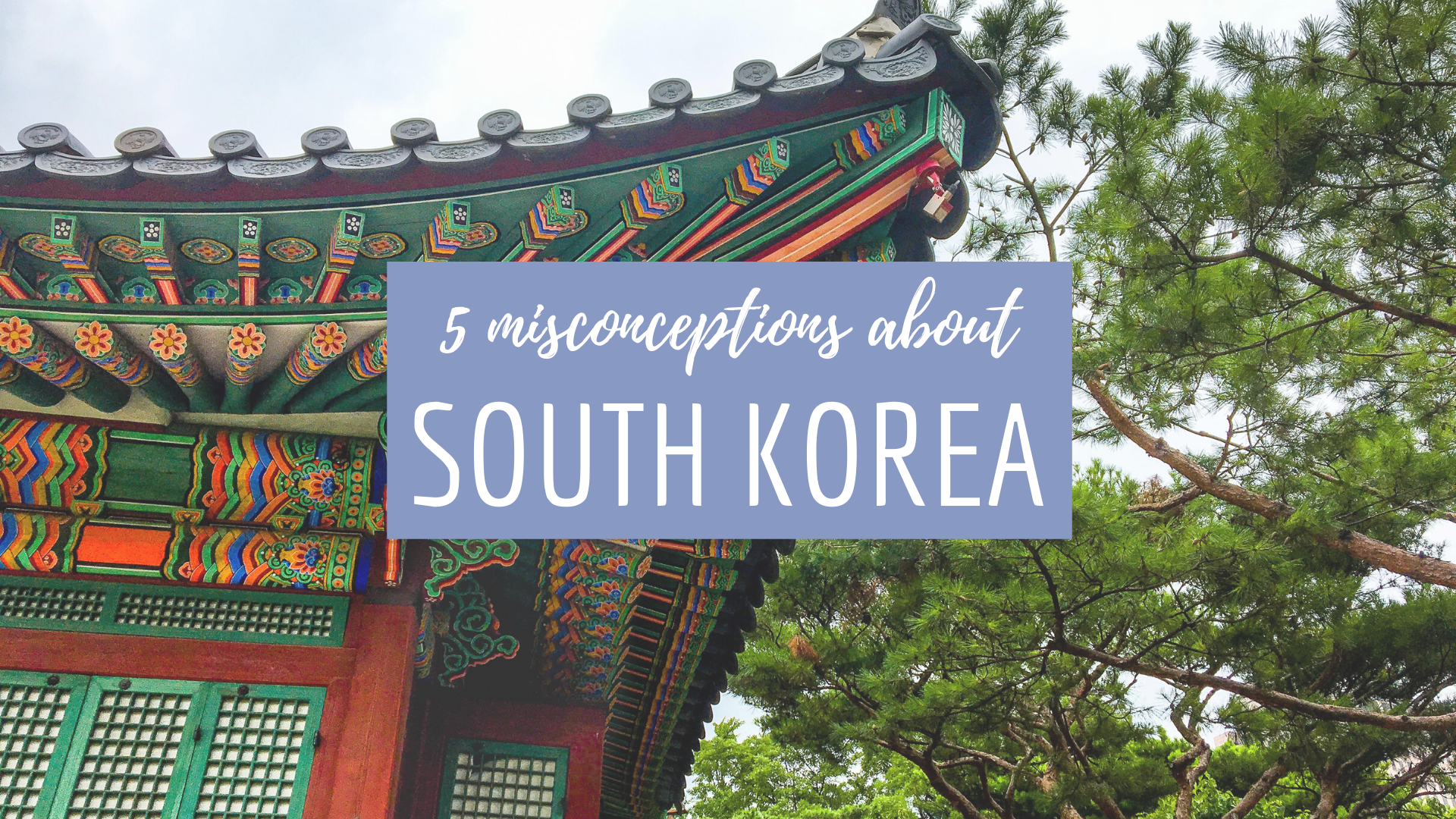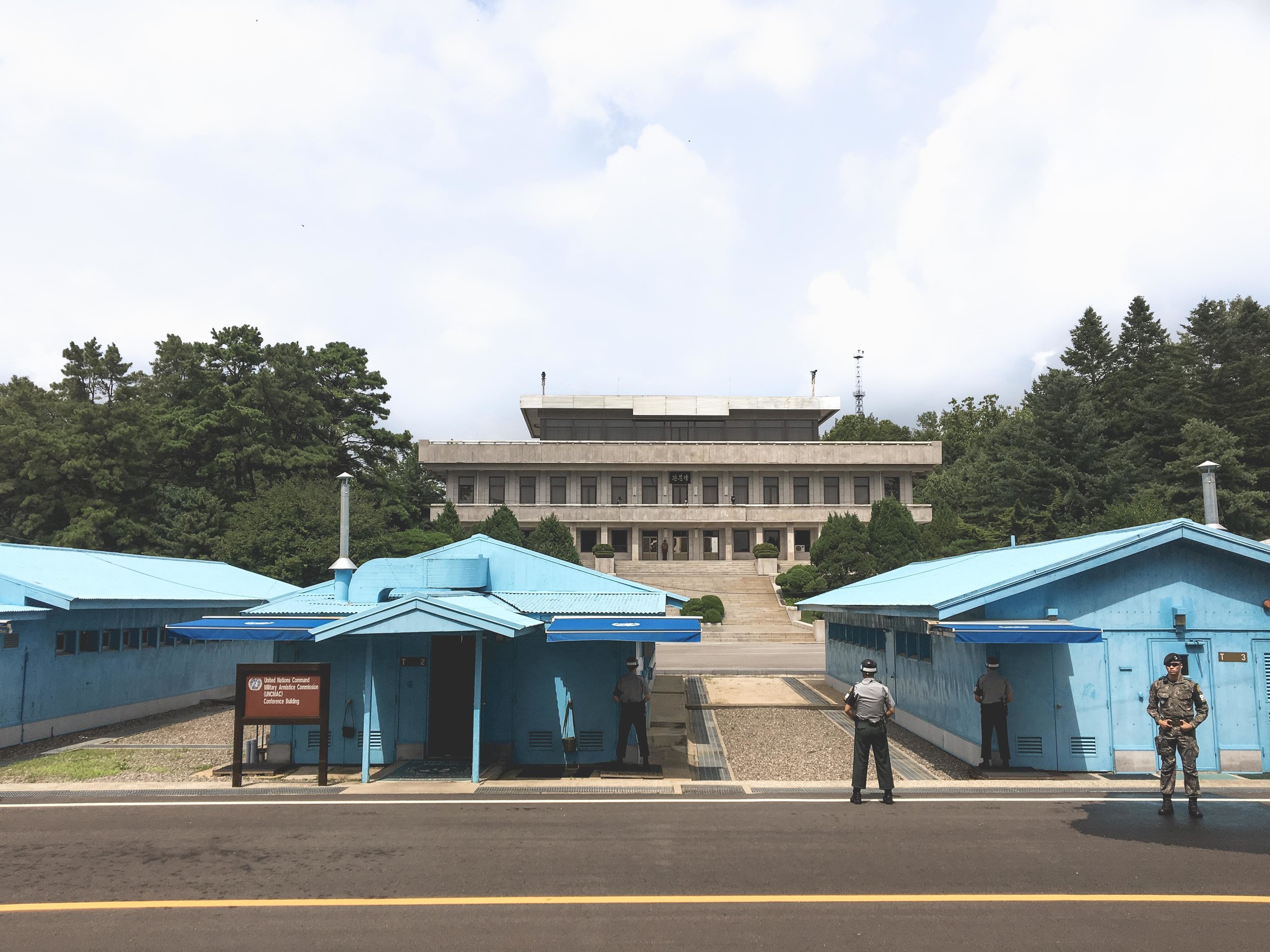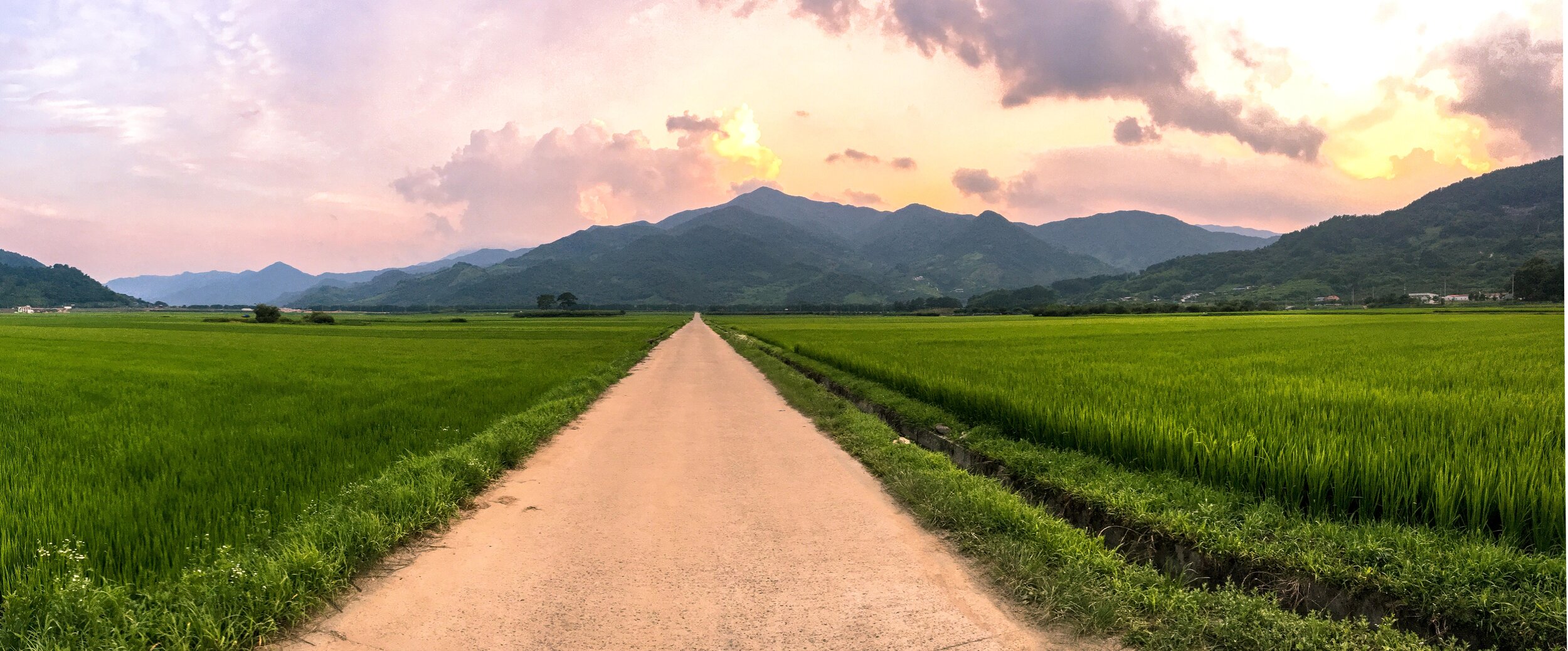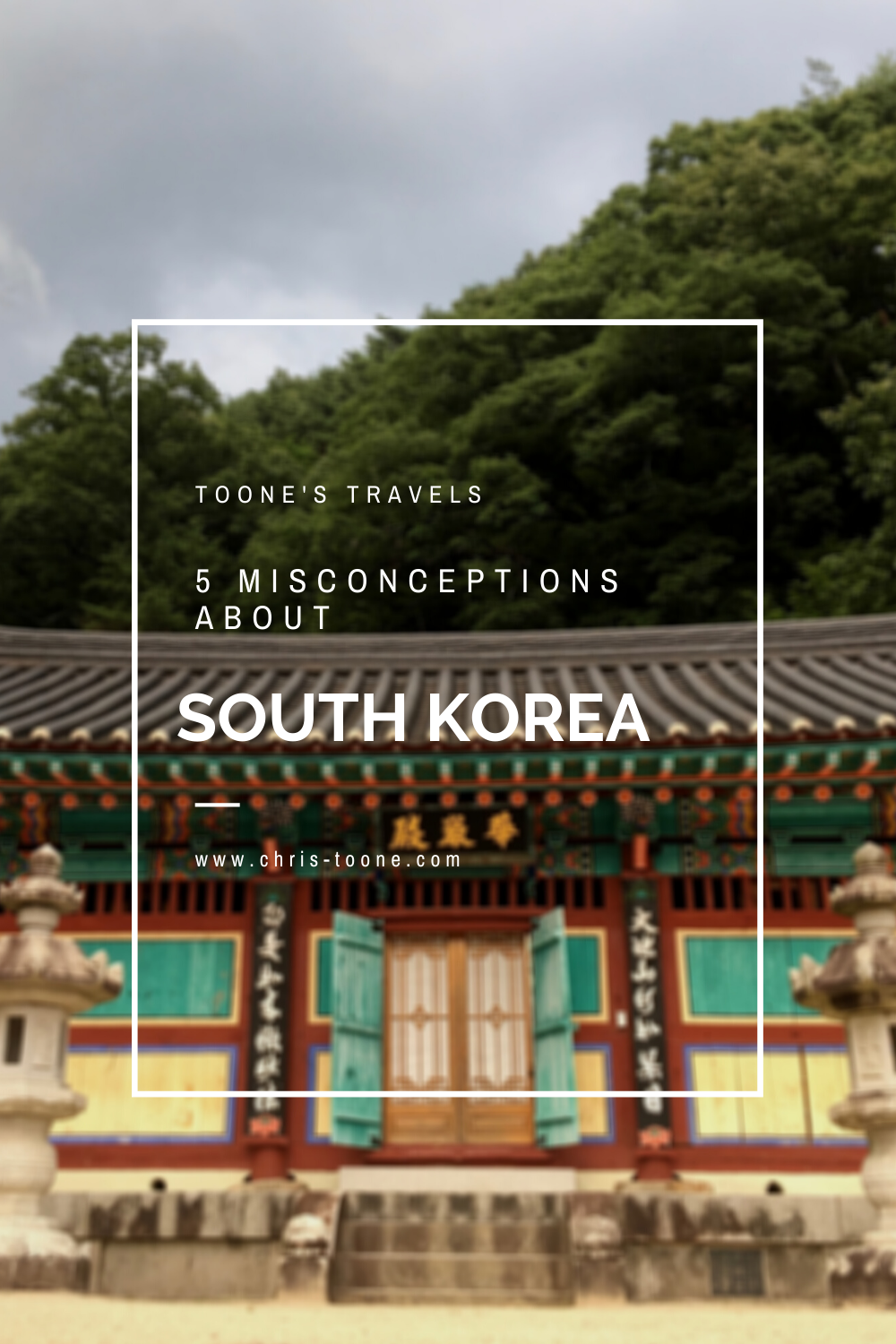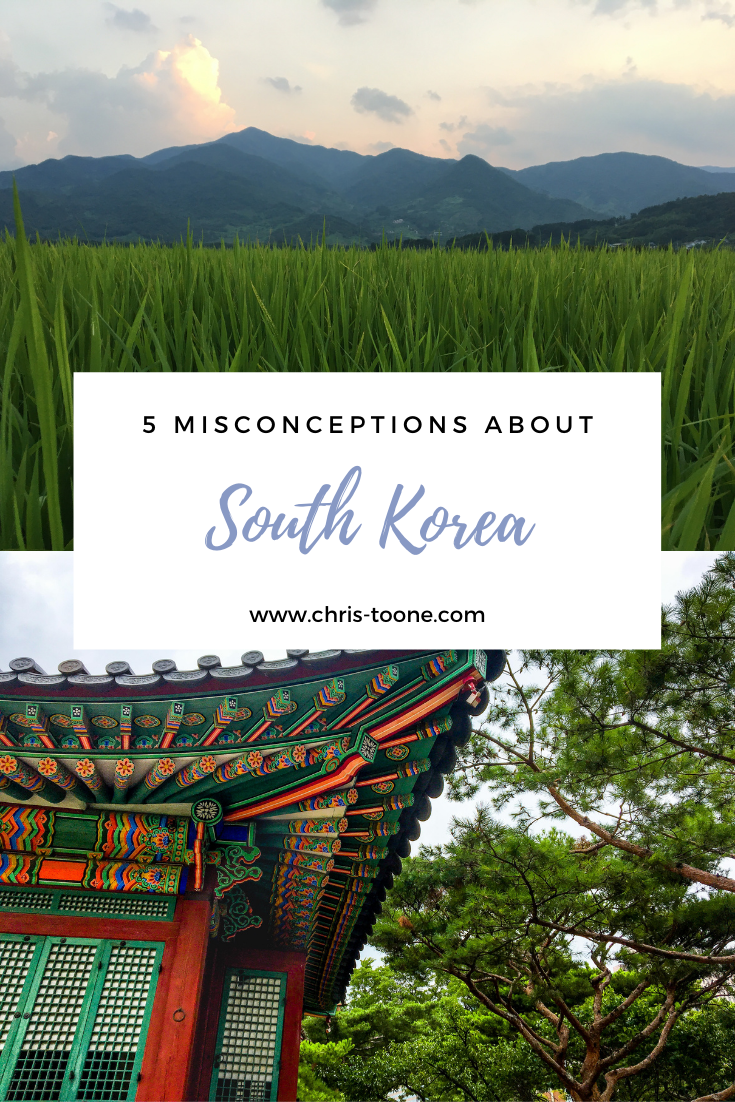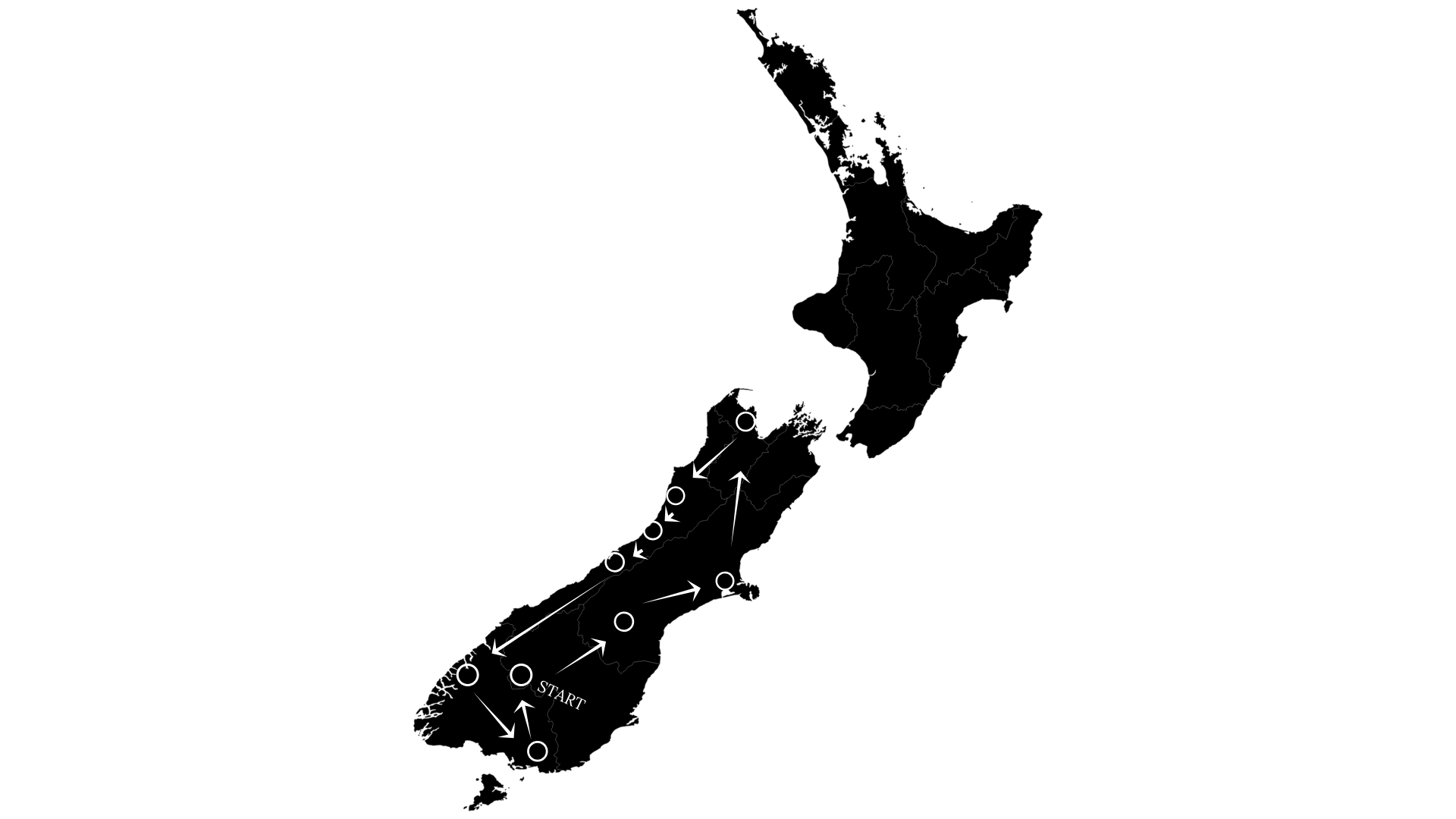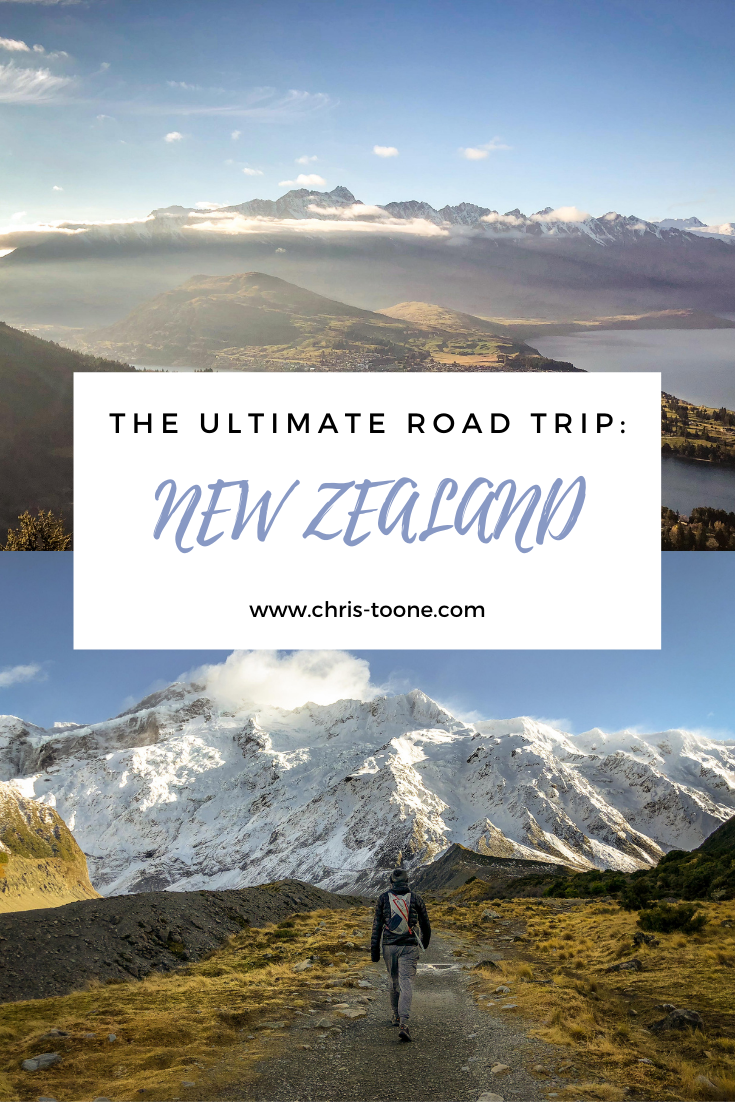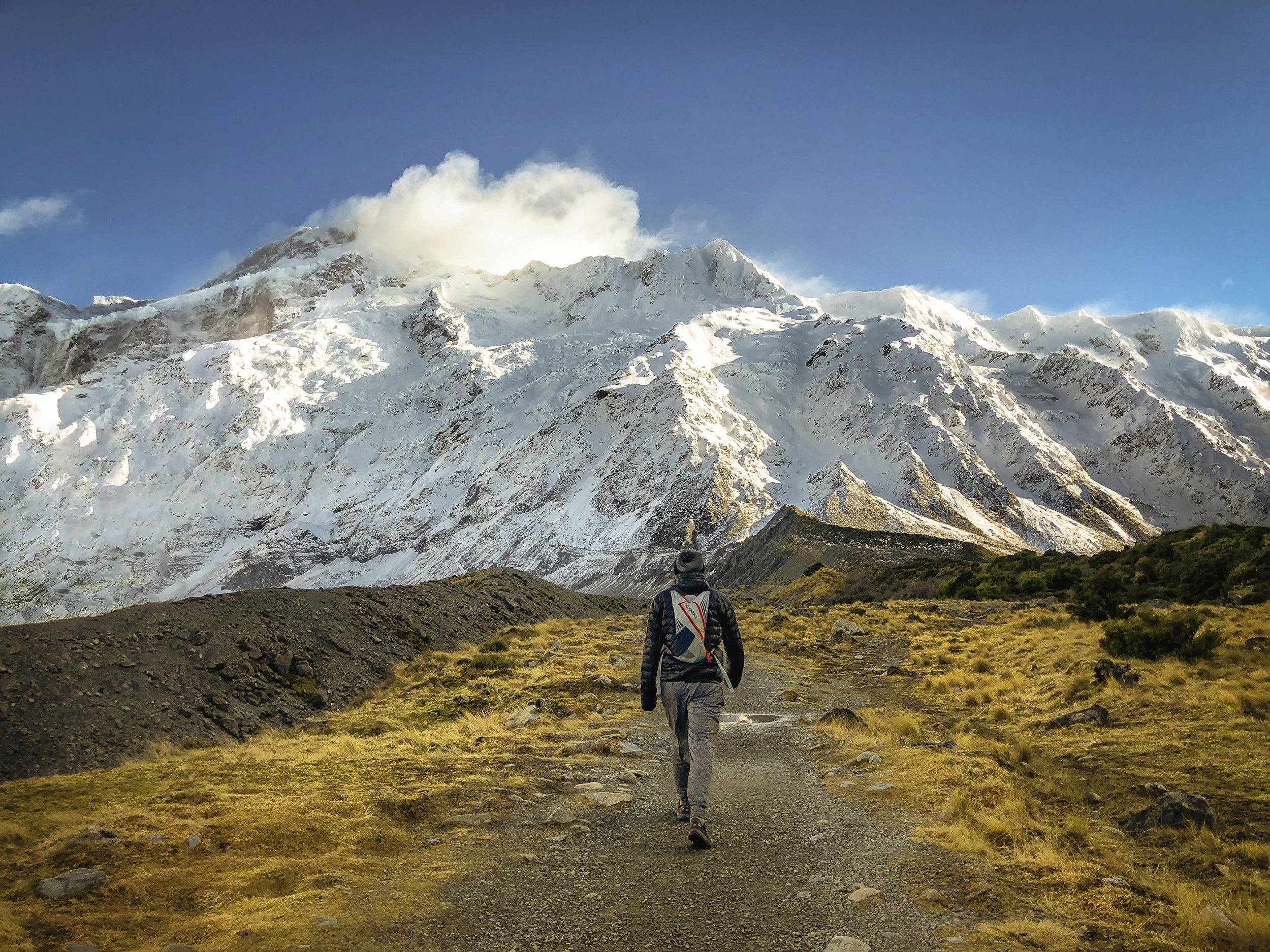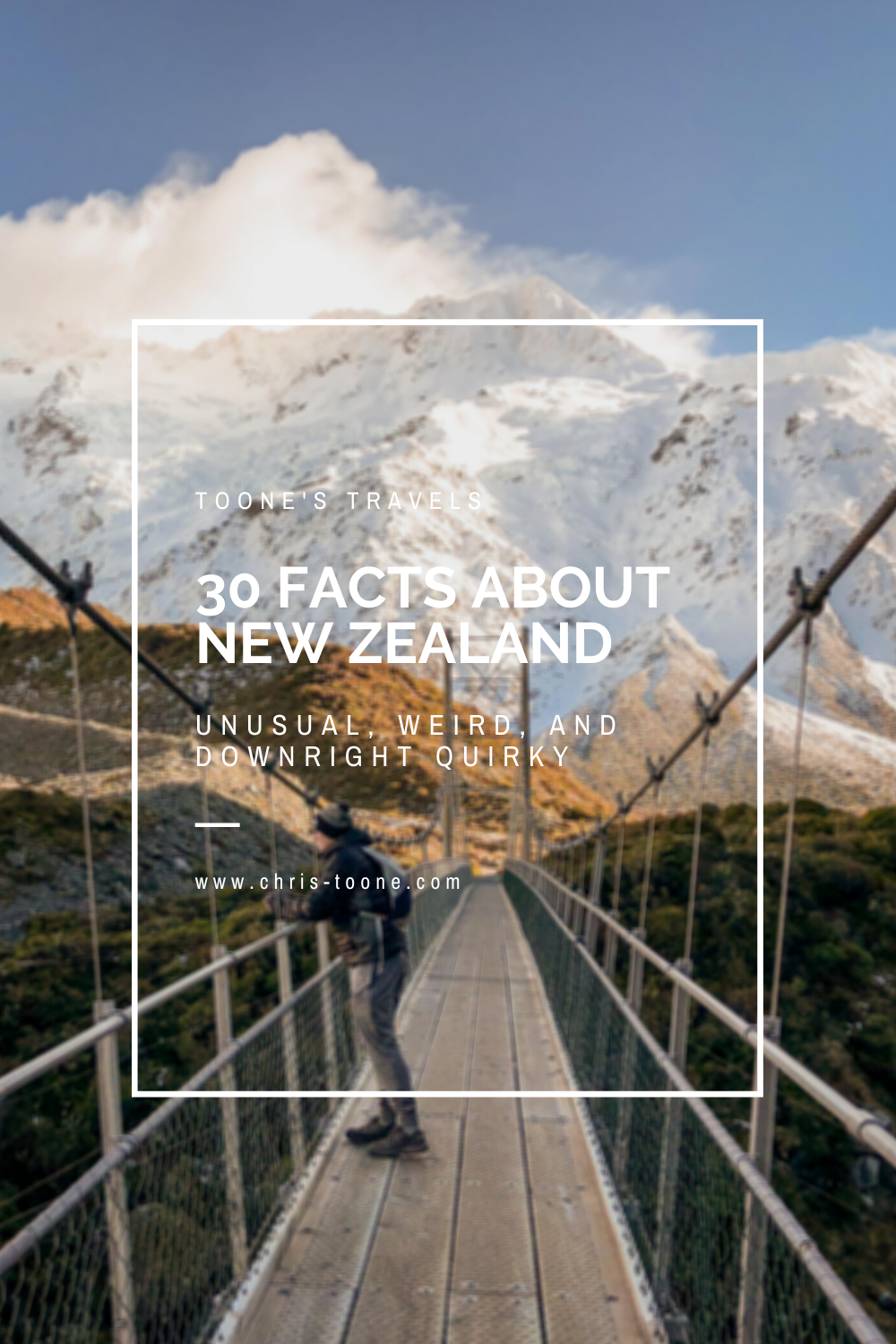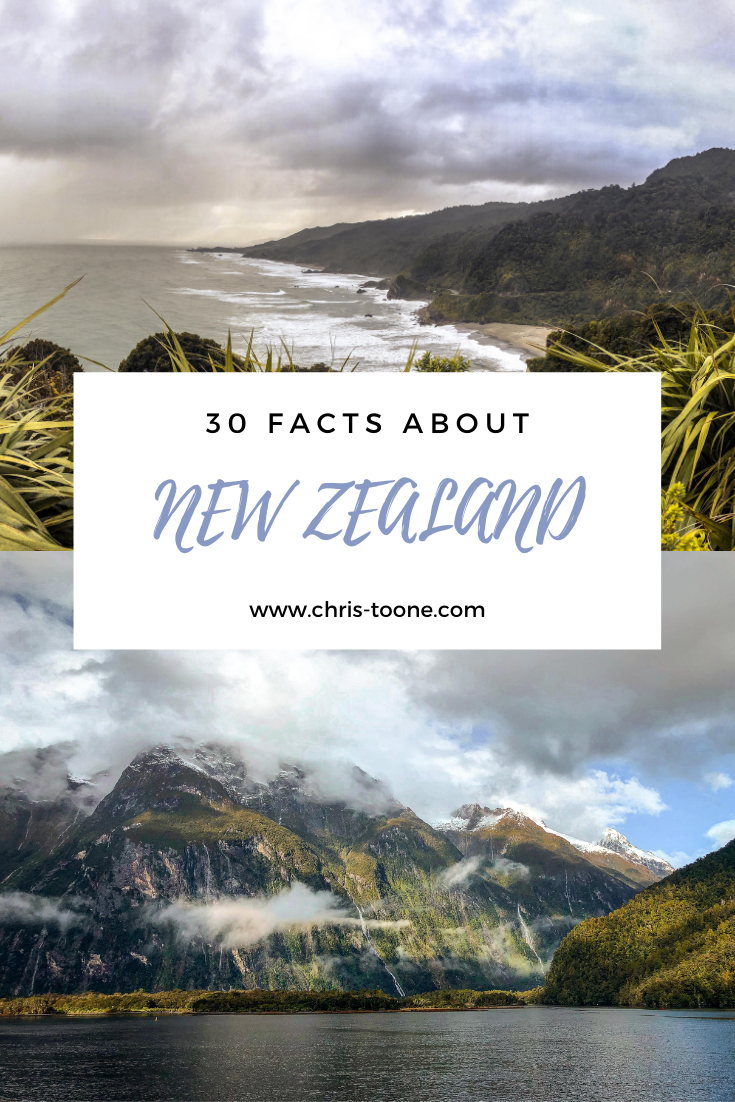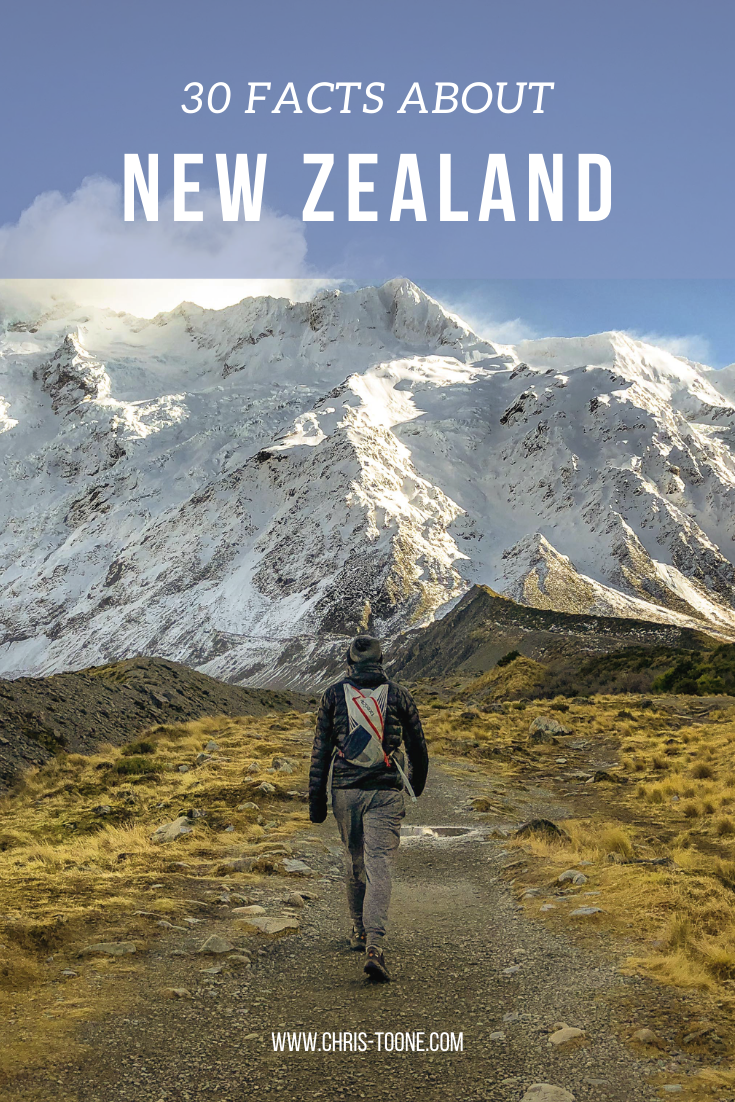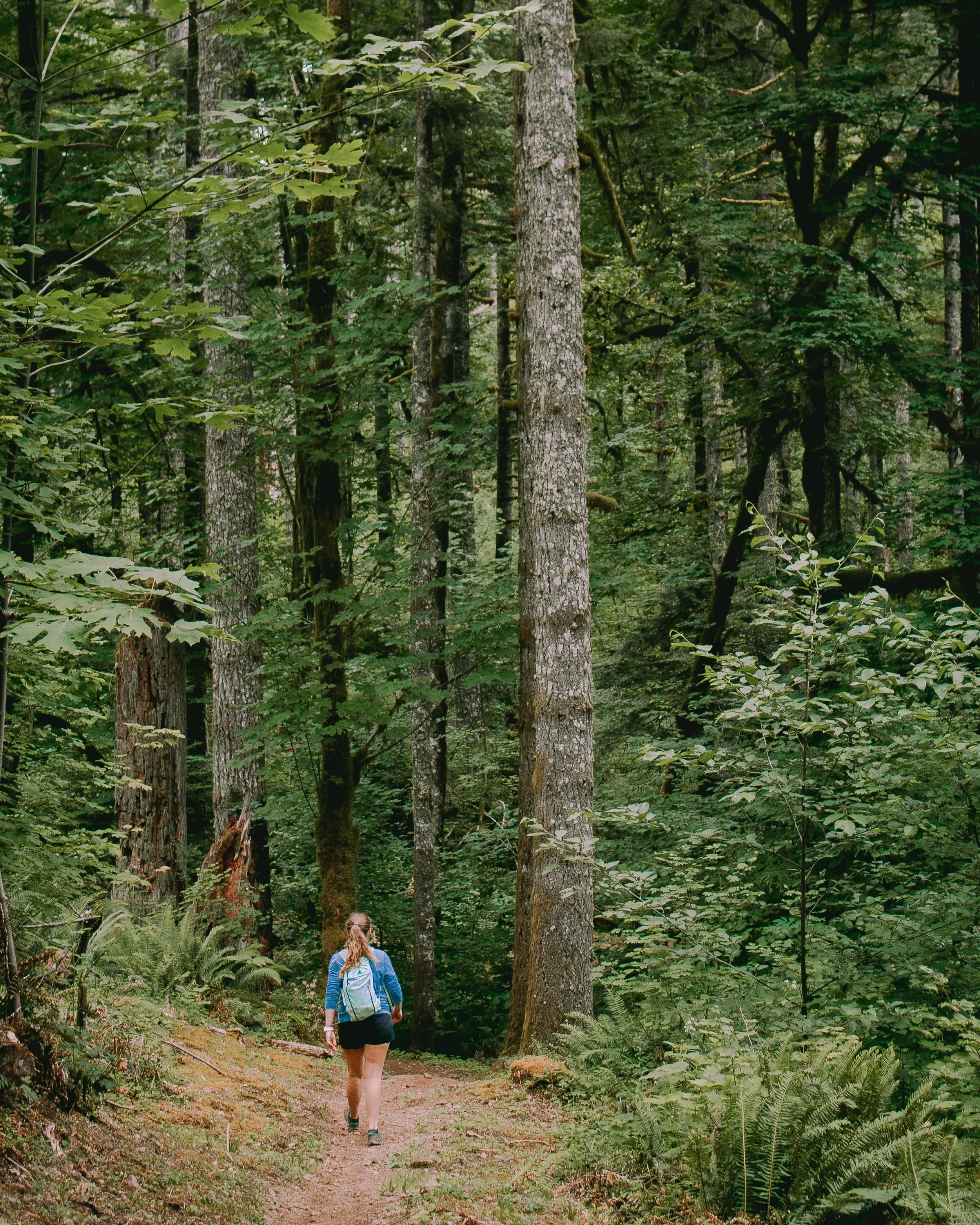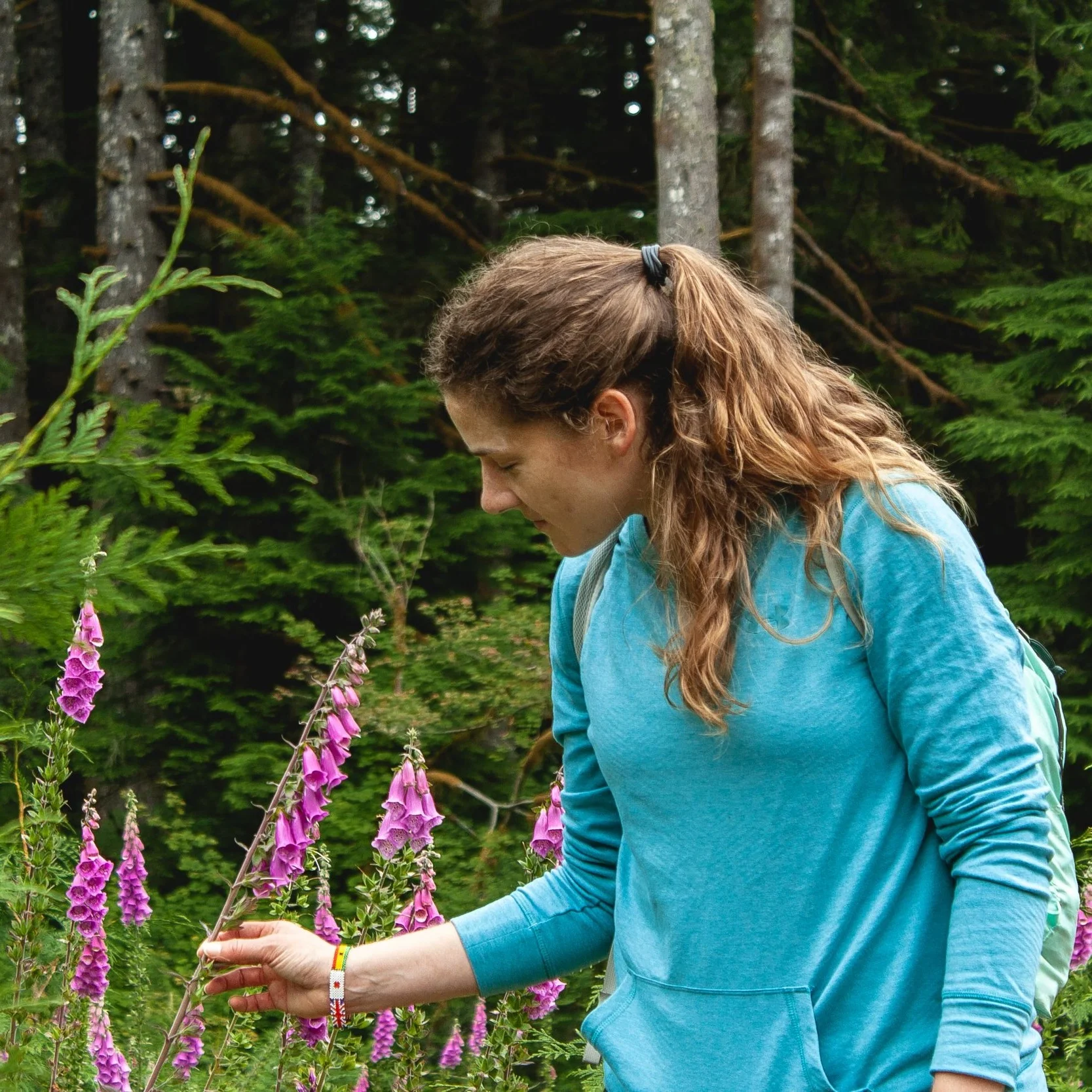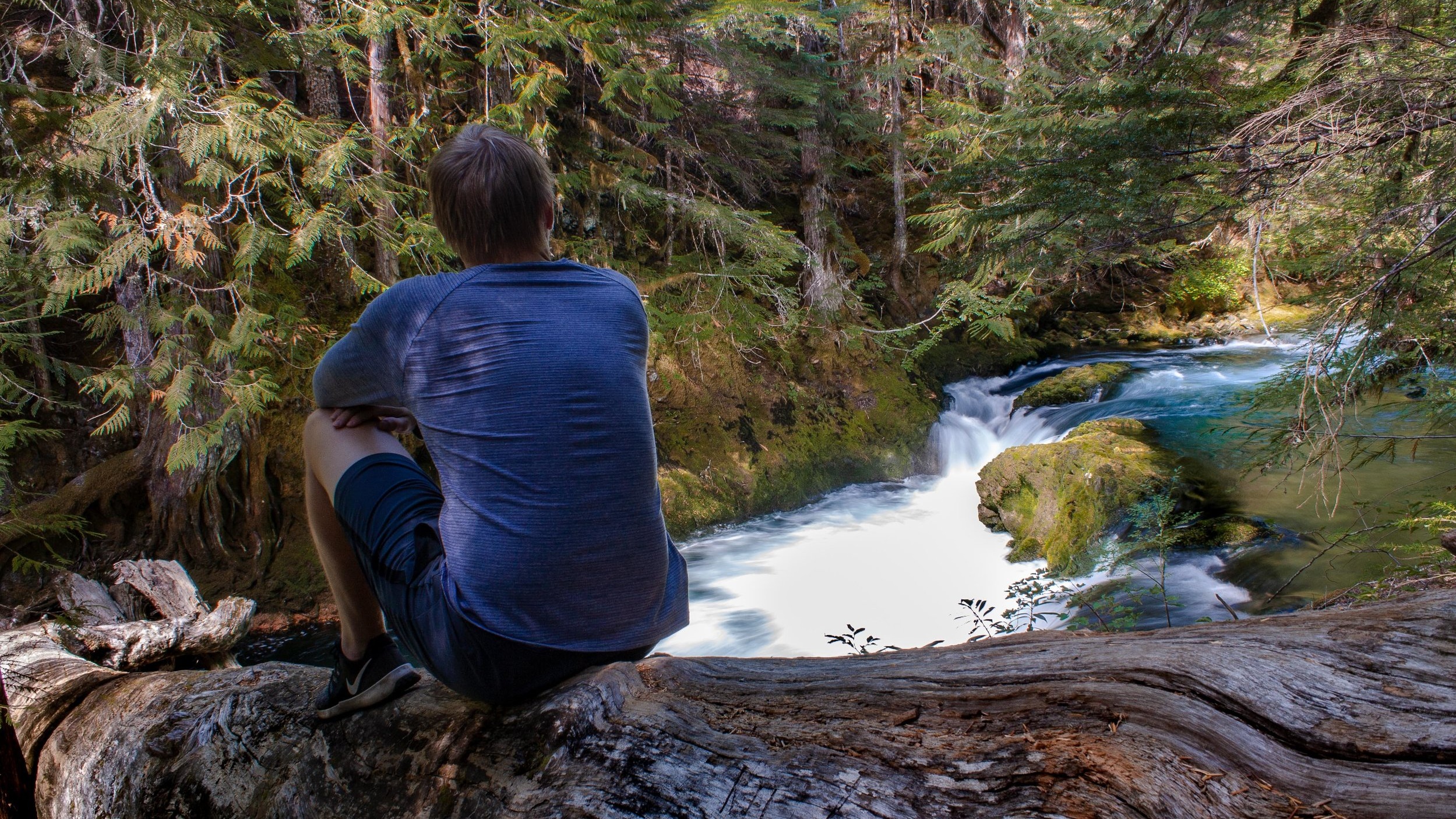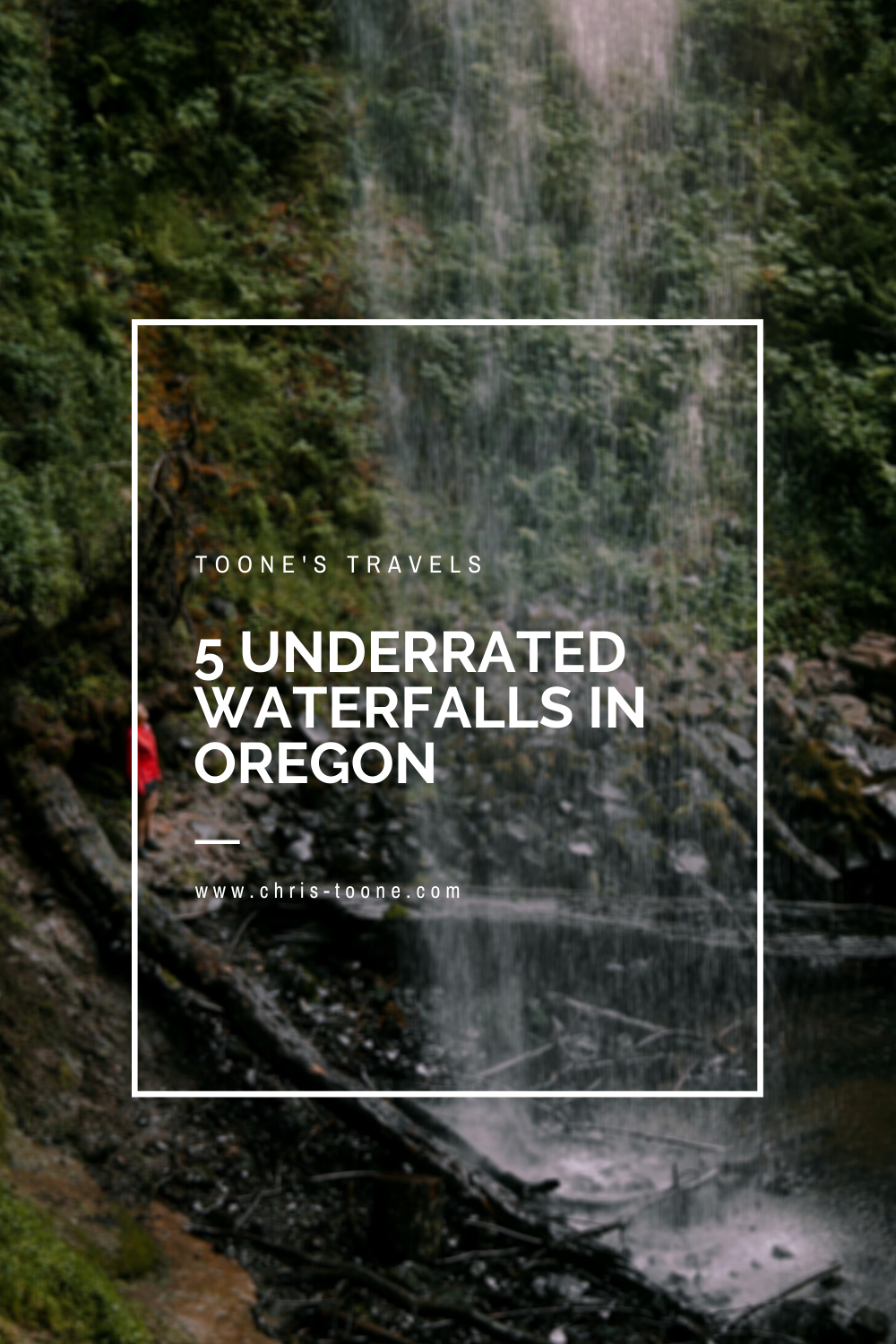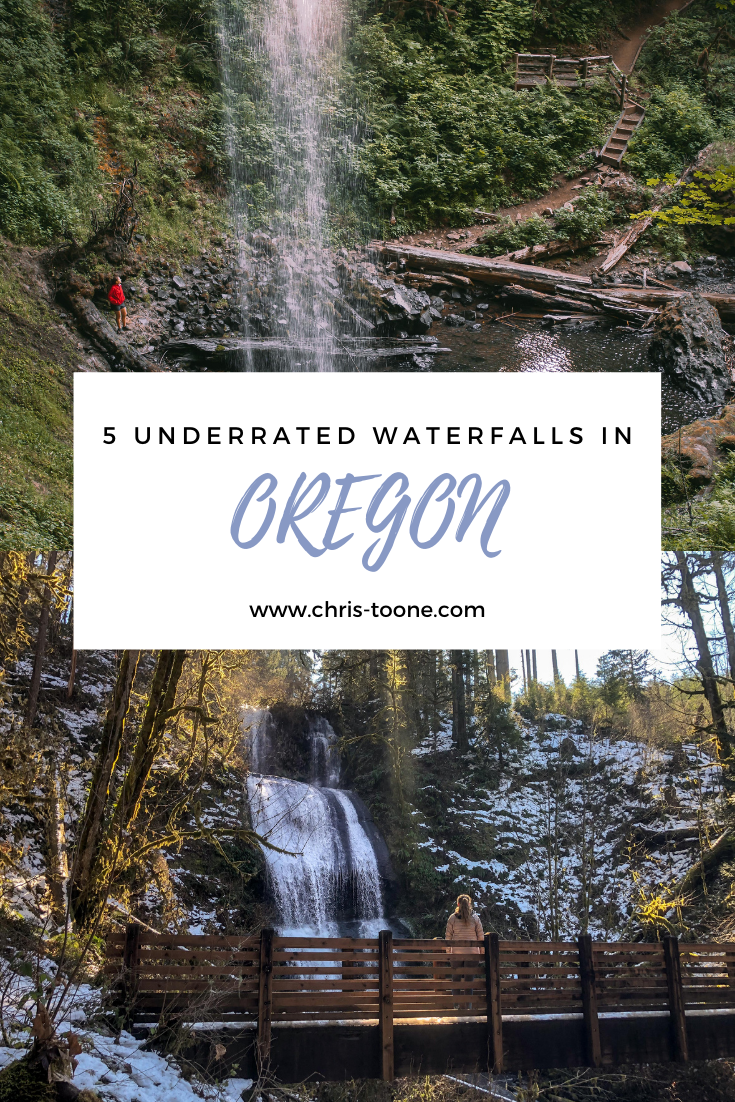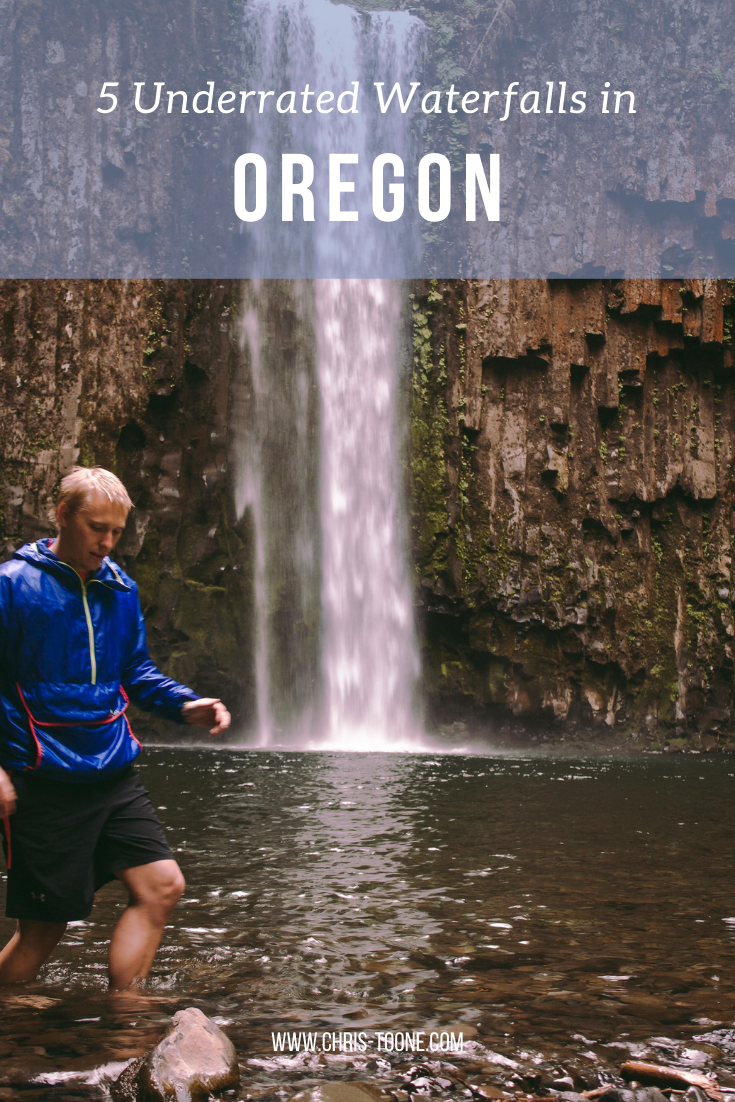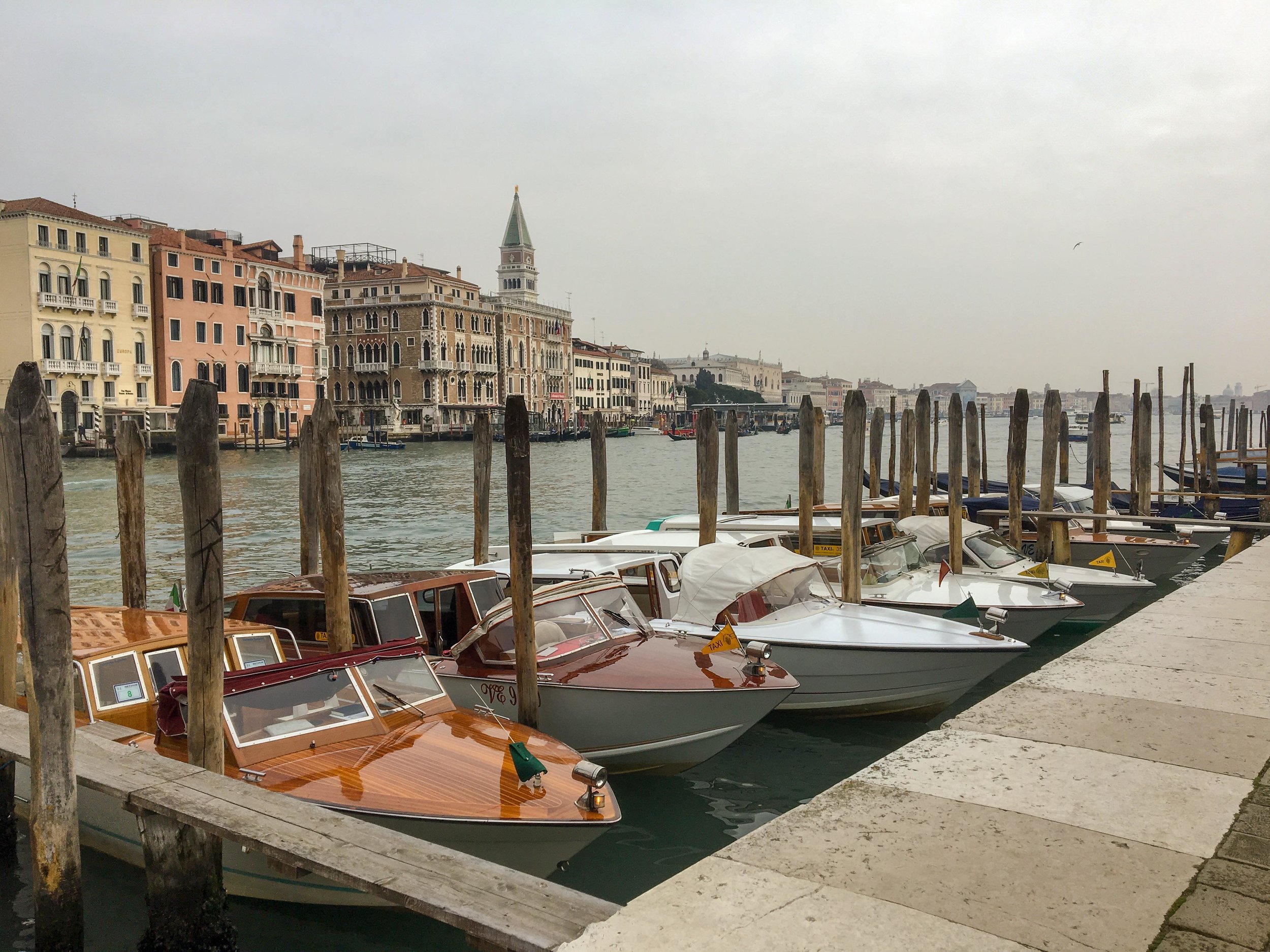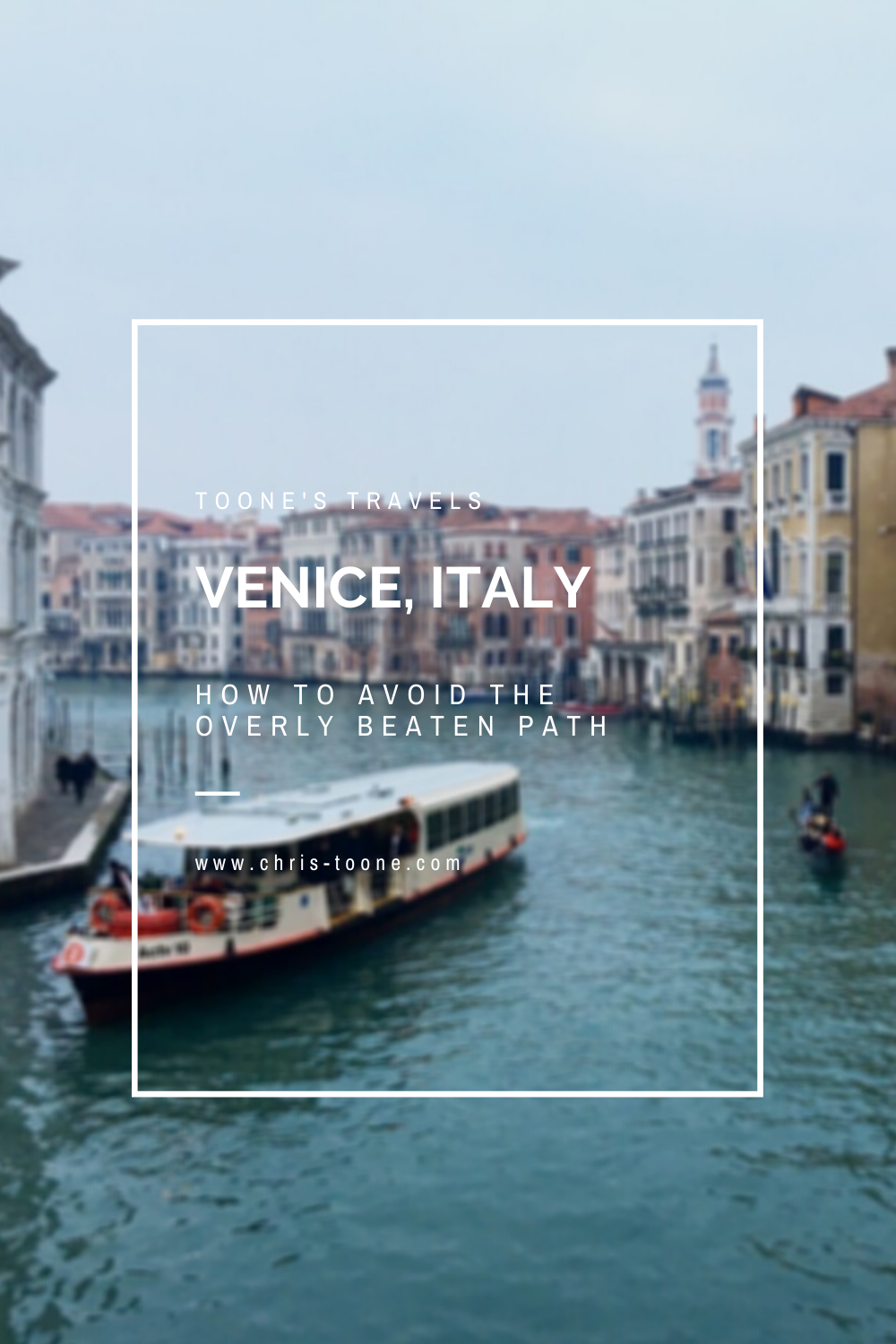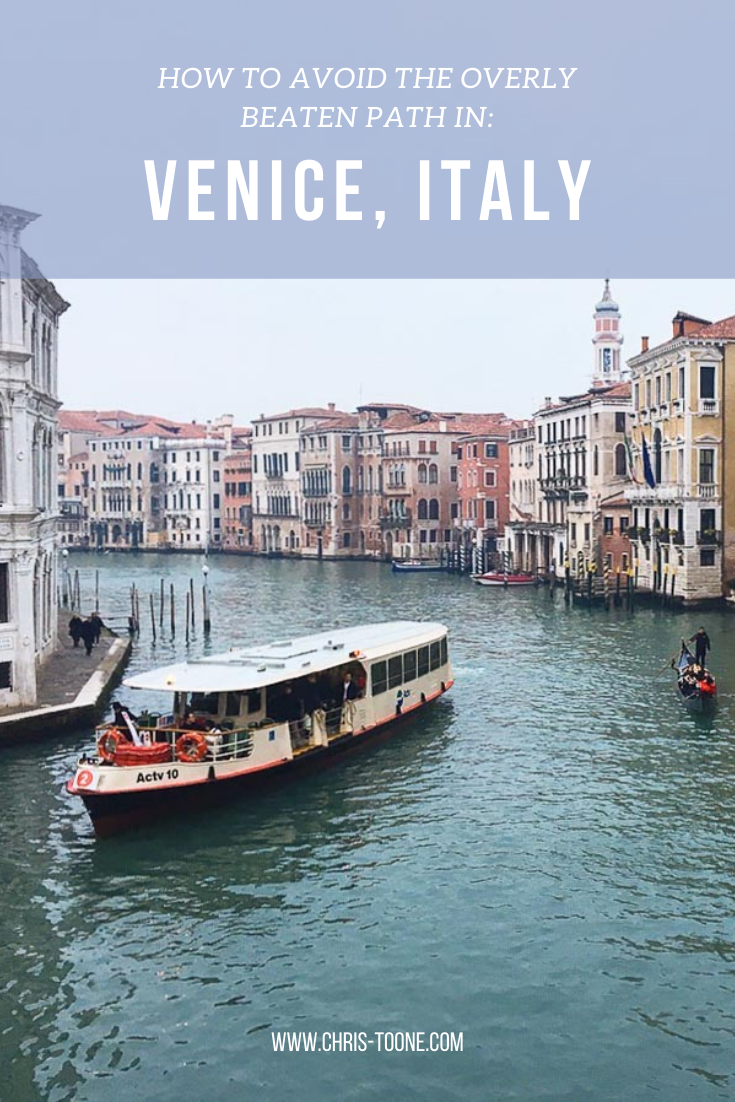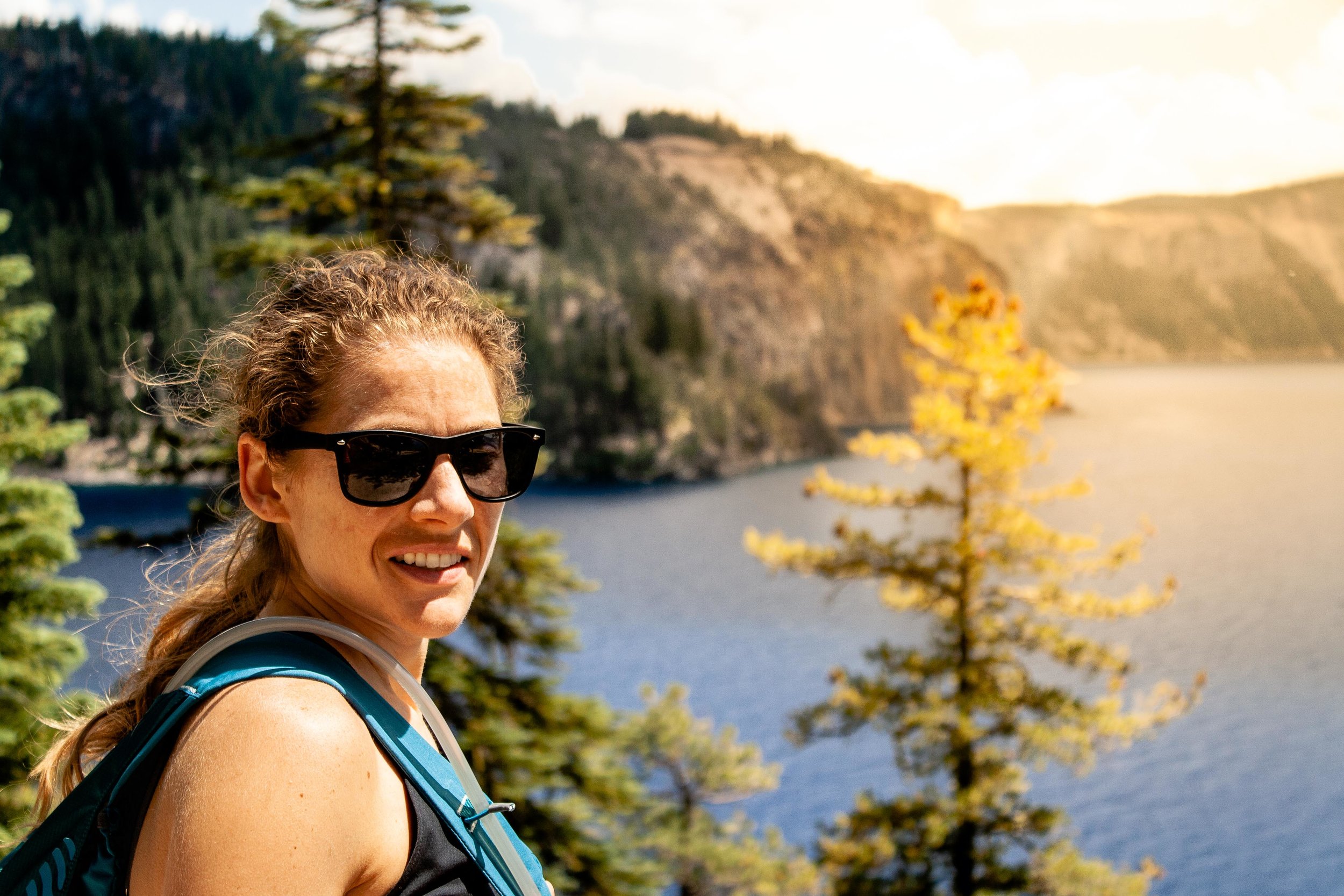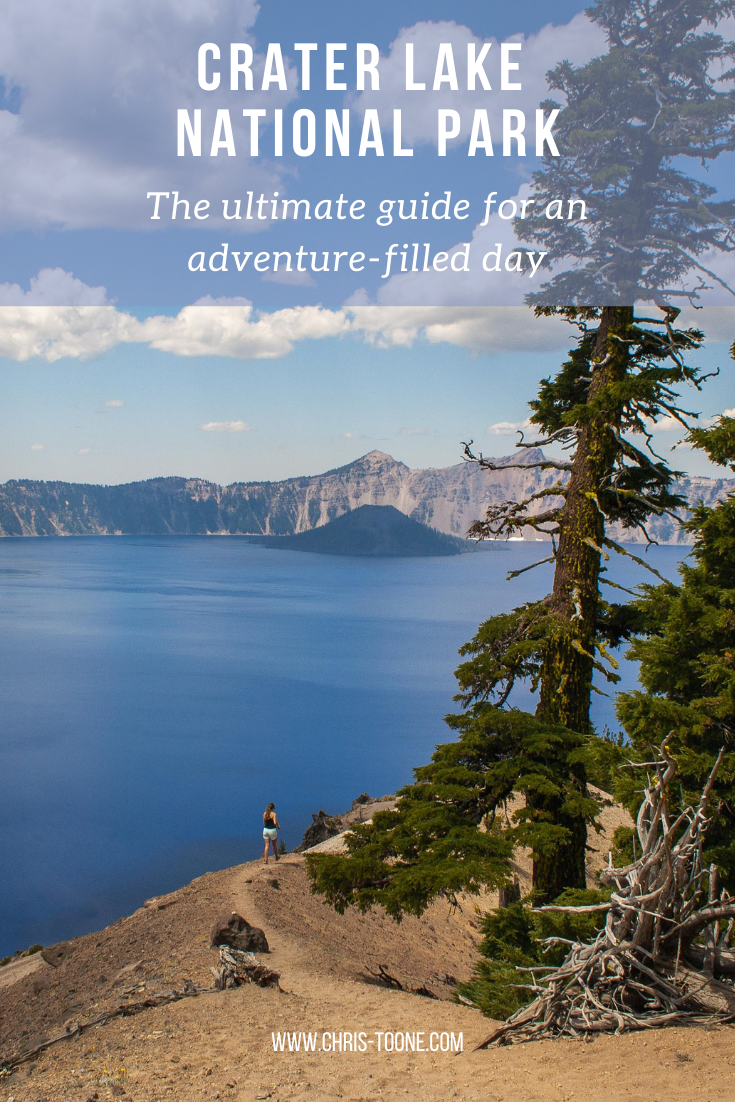5 Common Misconceptions About South Korea: Here's what I learned during my first visit
Take a moment to think about South Korea. What comes to mind? Odds are it includes something along the lines of North Korea, kimchee, Buddhism, and not much more. That’s ok! Here are 5 common misconceptions about this stunningly beautiful and wildly underrated country, because their neighbors to the north shouldn’t be a reason to stay away.
Take a moment to think about South Korea. What comes to mind? Something along the lines of North Korea, kimchee, and Buddhism. I knew next-to-nothing about the country before I spontaneously booked plane tickets two weeks in advance — I'm not very planning-oriented when it comes to travel (learn from my mistakes and do a bit of preparation ahead time before visiting South Korea)!
Once word had spread about my upcoming adventure, it was only natural that my inbox was filled to the brim with a slew of questions:
Is it safe? What if North Korea attacks?
What if you don’t like the food?
How will you communicate? What happens if you need help?
To be honest, I couldn’t answer any of those questions at the time. I would simply stumble my way through a response to not only calm the nerves of those asking but my own as well.
It wasn’t until I arrived in South Korea and experienced all that it has to offer that I realized there was nothing to fear. So, here are 5 common misconceptions about this strikingly beautiful, amazingly peaceful, and wildly underrated country. Enjoy!
MISCONCEPTION #1: IT’S NOT SAFE
It’s only natural that when one thinks of South Korea, North Korea comes to mind. Technically speaking, the two countries are still at war (an armistice agreement was signed in 1953 that effectively ended all combat). There must be a plethora of safety concerns that come from this, right? Wrong.
Unless traveling to the demilitarized zone, there is seemingly no tension, emotional or physical, among South Koreans. Instead, the 10 million people living 50km away from the border in Seoul go about their daily life uninterrupted. It was easy to forget where I was in the world until I checked a map.
At the end of the day, South Korea is a very safe country to visit; don’t let its location in the world keep you away!
Demilitarized Zone at Joint Security Area - South Korea
MISCONCEPTION #2: IF YOU DON’T ENJOY BUSY CITIES THEN SOUTH KOREA ISN’T FOR YOU
Did you know that South Korea has the fastest internet in the world? Or that nearly 51.5 million people co-exist within a country similar in size to Tennessee?
There are numerous facts that may lead one to believe that South Korea is a type of futuristic, technologically-advanced, population-dense country, especially when cities such as Seoul and Busan are often at the forefront of itineraries. What many don’t realize until they arrive is that over half of South Korea is covered in forests and mountains.
The best part? You don’t have to travel far to reach them!
Bukhansan National Park is located a mere 13km from Seoul, making it easy to trade in the city streets for a mountainside temple. If flora and fauna peak your interest over rocky cliffs, then be sure to wander around Dadohaehaesang, South Korea’s largest national park. Here you’ll spot over 1,500 species of plants and 140 different kinds of birds.
Mountains don’t do it for you? That’s fine. South Korea is also home to 2,313 km of coastline, including Jeju, the country’s own island paradise.
With so much to offer, there’s an adventure for everyone!
Hadong, South Korea
MISCONCEPTION #3: ALL SOUTH KOREANS SPEAK ENGLISH
Although English lessons are part of the modern-day South Korean education system, it’s important to realize that the language isn't always widely spoken.
As a result, English comprehension is generally, not always, limited to people under the age of 40. Older generations may know a few keywords and phrases but often aren’t comfortable conversing with someone fluent. There’s no harm in that, but what do you do when you’re lost and in need of help? Find a younger adult.
Seeking a more meaningful interaction and fewer charades?
Take a stab at learning Korean! Rather than relying on a plethora of confusing symbols, the language is based on a 24 character alphabet known as Hangul and is widely considered to be easier to learn than other languages such as Japanese and mandarin. The language wasn’t organically grown over time. Instead, the Hangul alphabet was specifically invented to be easy to use, in large part due to its phonetically-friendly nature.
Think of it as your passport into Korean society without much effort.
For more reading on South Korea, check out these posts:
MISCONCEPTION #4: BUDHISM REIGNS SUPREME
Buddhism may be one of the oldest religions in South Korea (established in 372), but the country has developed into a holy melting pot as centuries have passed. Yes, Buddhist beliefs remain a pillar of South Korea’s cultural heritage, as does Confucianism, but it’s only the second most practiced religion. A 2015 census showed that 19.7% of South Koreans identified as Protestants (thanks to North American missionaries dating back to the 19th century), which was more than both Buddhism (15.5%) and Catholicism (7.9%). Islam also continues to grow since the inception of the Islamic Society of Korea in 1955.
It’s hard to ignore the tens of thousands of temples constructed throughout the country but peel away the surface and you’ll find yourself staring deeper into a religious spectrum that many never realize exists, let alone experience.
Daewonsa Temple - South Korea
MISCONCEPTION #5: IT’S IMPOSSIBLE TO FIND NON-TRADITIONAL FOOD
South Koreans love their kimchee. Whether it’s served as a traditional side dish (known as banchan), stuffed inside of a dumpling, or simply a meal of its own, this spicy fermented cabbage is widely available for consumption at every turn. The same can be said of other traditional Korean dishes such as bibimbap (mixed vegetables and rice), tteokbokki (spicy Korean rice cakes), and makgeoli (a milky, off-white fermented rice drink).
Although the traditional culture and food are well preserved and respected throughout the country, the younger generation has grown up with more options that seemingly expand each day. South Korea ranks fourth in the world for the most Starbucks stores per capita (with 1,008 stores total, that’s one outlet for every 50,000 people) and it’s not uncommon to stumble upon the golden arches of McDonald’s as you meander through city streets. Despite what some may lead you to believe, it’s relatively easy to satisfy even the most western of taste buds.
It doesn’t have to be all big-business, though. How do fried chicken and beer sound?
Together, the two are known as “chimaek” and the obsession runs deep. So deep in fact that Daegu hosts an annual festival dedicated solely to this delectable combo — all the more reason to visit in July! You can read more about how this craze came to be by clicking here.
Gwangjang Market - Seoul, South Korea
So, what do you think? I hope that, in the very least, a trip to South Korea sounds more enticing than it might have prior to reading this post. Give it a go. After all, how do you know if you enjoy something if you don’t try it?
Thanks for reading and as always, stay safe & happy travels!
Pin this post and share with others!
The Ultimate New Zealand Road Trip: An 8 day campervan adventure around the south island
Planning a trip to New Zealand? Be sure to check out this guide about traveling around the south island and discover some of the most beautiful landscapes on the planet. From choosing your route to where to stay and what to do, this post has everything you need to say “let’s go” and book that next adventure!
Please note: All info below is up to date as of May 2023
If I could handpick one destination for you to experience, it’d be New Zealand. An outdoor adventurer’s paradise, the two islands combine for a population of under 5 million inhabitants and come complete with sprawling scenery that begs to be explored. With nearly 33% of the country protected under the national parks system, it’s not hard to stumble upon pure and untouched nature!
It was just over a year ago that Heather and I crammed our backpacks full of winter jackets, caught a flight from LAX, and traveled south for our first campervan experience - driving around New Zealand’s south island.
With only eight days to spare, we knew it’d be long hours on the road and a lot of activities to cram into a short period, but we were committed to making it happen.
Whatever you choose to do and wherever you go in New Zealand, you won't regret booking a plane ticket!
One quick note about campervans in New Zealand: It’s vital to know the classification of the vehicle you’re renting and how that relates to your camping options. Many free sites around the country are for self-contained vehicles only, meaning that the van must be equipped with a toilet and grey water tank. After crunching some numbers, we calculated that springing for the slightly more expensive Jucy Chaser would save us money on accommodations because of it’s “self-contained” status.
BEGIN IN QUEENSTOWN
One of my favorite parts about visiting New Zealand is simply arriving. The flight path into Queenstown yields mind-blowing landscapes. It’s a pretty special feeling as you step onto the tarmac, look up and see The Remarkables in all their glory.
Pro Tip: Snag a window seat on the left side of the plane for the best views.
From here, we picked up our campervan and drove straight to Lake Pukaki for our first overnight.
Total Drive Time: 2hr 45min
Overnight Stay: Lake Pukaki Overnight Campervan Parking. Onsite toilets are available, but there are no powered sites. Non-self contained vehicles are allowed.
Road trip map of New Zealand
DAY 1: LAKE PUKAKI AND MT. COOK NATIONAL PARK
Why you should go: Lake Pukaki is the sole access point to Mt. Cook National Park, home to New Zealand’s tallest mountain (3,765m). It’s also the country’s deadliest peak, accounting for nearly 80 reported casualities since the early part of the 20th century.
With tons of hiking to choose from, you can be sure that there’s something for all ages and fitness levels. Looking for a view of Mt. Cook? Try the Hooker Valley Track. Although it’s one of the most popular hikes, the 10.5km round trip path takes adventurers over swinging bridges and through the valley before reaching Hooker Lake, all at only 100m of elevation gain - talk about bang for your buck! Whichever hike you choose, I guarantee you will encounter some of the most breathtaking scenery in all the world. For a comprehensive list of hikes within Mt. Cook National Park, click here.
Lake Pukaki is also an optimal basecamp for exploring nearby Lake Tekapo or hopping on a scenic flight to soak up the spectacular aerial views. My personal recommendation would be Air Safaris; great service and a variety of options to fit any budget!
Must Do: Hooker Valley Trek and Air Safari Tour
Total Drive Time: 4 hrs. (Tekapo to Amberley Beach). Make sure to enjoy the views as you drive over Burke’s Pass along Highway 8!
Overnight Stay: Amberley Beach Reserve. Any vehicle is welcome to camp here, with both powered and non-powered sites available. The campground also offers toilets and bucket shower stalls and costs between $5-25 NZD per night, depending on your chosen site and vehicle.
Planning to stay longer in Lake Tekapo? Here’s a list of things to do and see:
Hike to the Mt. John Observatory for sweeping views over Lake Tekapo
Test your hand at astrophotography (Tekapo is a designated International Dark Sky Reserve)
Take flight high above Mt. Cook with Air Safaris as your guide to truly grasp the magnificence of the area
Relax in the Tekapo Hot Springs
Hooker Valley Trek at Mt. Cook National Park
DAY 2: KAIKOURA
Why you should go: The beauty of New Zealand is that you don’t need to be either a water person or a mountain person; you can be both! The sleepy seaside town of Kaikoura can attest. Located at the base of the aptly named Kaikoura mountain range, it is widely known for its resident sperm whale population, making it THE perfect place to hop on a boat and experience the wildlife from the water. Not a fan of the open sea? No problem. Stroll along the Kaikoura Peninsula Walkway to the rock platforms and prepare to “ooh” and “ahh” when you stumble upon a colony of fur seals!
Must Do: Whale watching in the South Pacific Ocean. We used Whale Watch Kaikoura and had an incredible time. Make sure to book in advance as spots fill up fast, even in the winter months!
Total Drive Time: 6 hrs. (2 hrs. from Amberley to Kaikoura and 4 hrs. from Kaikoura to Motueka)
Overnight Stay: Motueka Beach Reserve. This is a free camping area that only allows self-contained vehicles. It comes complete with toilets, showers, designated fire and cooking areas, and is located adjacent to the Motueka Salt Baths, just in case you feel the urge to take a quick dip in the Tasman Bay.
Kaikoura, New Zealand
DAY 3: ABEL TASMAN NATIONAL PARK
Why you should go: What do you get when you add rainforests to waterfalls and and sprinkle golden sand beaches on top? Paradise. Spread along the south island's northern coast, this national park is most well known for the Abel Tasman Coast Track as it winds its way 60km along the pristine water. This particular hike takes a bit of advanced planning, but it is still possible to experience the region by trekking to nearby to Wainui Falls. This 3.4km out and back trail maneuvers it's way through the lush rainforest and over suspension bridges before arriving at the stunning waterfall. Be sure to take a quick dip in the frigid waters and make sure to have a towel at the ready!
Must Do: Wainui Falls was an incredible hike, but our favorite part of the day was simply driving and exploring the area, especially Highway 60 up and over Takaka Hill.
Total Drive Time: 4.5 hrs. ( 1.5 hrs. from Motueka to Abel Tasman National Park and 3 hrs. from Abel Tasman to Murchison)
Overnight Stay: Riverside Holiday Park (Murchison). From 3 bedroom cabins to non-powered tent sites, this accommodation has something for everyone. The facility comes complete with a community kitchen, flushing toilets, and warm showers… this holiday park certainly spoiled us! We opted to rent a powered site for just $35 NZD ($22 USD) in order to hook up the heater in our van to keep us warm during a rainy night.
Want to learn more about this island nation? Check out these 30 Interesting Facts About New Zealand!
Day 4: PUNAKAIKI AND HOKITIKA
Why you should go: Stunning coastline and glow worms galore! The western part of the south island is like nothing I had ever seen before. Lush rainforests stretch from high above in the Southern Alps to the Tasman Sea below.
Driving aimlessly along Highway 6 and spontaneously stopping as you go is worth it in its own right, however this part of the island is where you can find two popular destinations: Punakaiki and Hokitika.
Punakaiki is home to the curious limestone formations known as Pancake Rocks, the perfect place to take a short 1.1km walk around these geological oddities and stretch your legs.
Pro Tip: Try to time your visit around high tide. This is when the surge pools and blowholes will be most active, leading to a truly spectacular show of forece from the ocean.
Feeling adventurous? Bring a headlamp and take a quick detour to the Punakaiki Cavern, located just north of the Pancake Rocks along Highway 6. Don’t forget to look up to spot the glow worms and stalacites as you descend into the darkness!
If you have trouble spotting the glow worms in Punakaiki, don’t worry, so did we! Keep driving south to Hokitika and you’ll find the Hokitika Glow Worm Dell. Located directly off of Highway 6, this leafy canyon is a protected home to these intriguing creatures.
Make sure to go at night as they illuminate the path. It’s free and only a 2 minute walk from the roadside, making it the perfect alternative if you don't have time or budget for an organized tour.
Did you know that the light emitted from these worms isn’t just mesmerizing to the human eye? It’s used to attract their food, luring insects and trapping them in their sticky threads!
Must Do: Hokitika Glow Worm Dell
Total Drive Time: 3 hrs, with PLENTY of roadside stops along the way
Overnight Stay: Hokitika Holiday Park. Powered sites start at $20 NZD per person and access to the community kitchen, lounge area, showers, playground, and free wifi!
Views from Highway 6
DAY 5: FOX JOSEF AND FRANZ GLACIERS
Why you should go: Where else can you hike through the rainforest en route to a glacier? The answer is nowhere!
Franz Josef and Fox Glaciers are the only two that exist in the world. Both offer a unique experience, trekking through the lush forest and up ice-carved valleys to their terminal faces.
The Franz Josef Walk is a 5.4km path up to the 7,000 year old sheet of ice, while the Fox Glacier Valley Walk is a 6km trail that follows the south bank of the Fox River through the ancient podocarp rainforest. A professional guide is needed to access the glacier if you're looking to get more up close and personal.
Check out Franz Josef Glacier Tours and choose your adventure: ice climbing, heli-hiking, and more!
Must Do: The Franz Josef Glacier Walk
Total Drive Time: 4 hrs. to Haast, with stops at both the Franz Josef and Fox Glaciers
Overnight Stay: Haast River Holiday Park. This powered site is slightly more expensive at $48 NZD per night, but provided access to the kitchen, showers, and wifi. Onsite motel rooms are also available.
Franz Josef Glacier from above
DAY 6: WANAKA (TRANSIT TO MILFORD SONUD)
Why you should go: Located on the southern shore of Lake Wanaka, this town is the perfect stopover en route to the Milford Sound. Snap a picture of That Wanaka Tree or simply enjoy a flat white as you peruse the stores along the waterfront.
Have a bit more time to spare? Take a jaunt up Roy’s Peak, a steep 16km trek that ends in sweeping views over the surrounding landscape.
Must Do: Stroll along Lake Wanaka
Total Drive Time: 5.5 hrs. from Haast to Cascade Creek Campground (brief stops in Wanaka and Te’Anu)
Overnight Stay: Cascade Creek Campground. This is the closest campground to the Milford Sound without making reservations in advance and costs just $15 NZD per person. Toilets are available, however powered sites are not. It’s the perfect place to spend the night if you have an early morning cruise of the sound scheduled for the following day!
Pro Tip: Fill up your gas tank in Te’Anu… it’s the last stop you’ll find before reaching the Milford Sound.
DAY 7: FIORDLAND NATIONAL PARK AND MILFORD SOUND
Why you should go: With cascading waterfalls that plummet over the fjords and into the serene waters below, this cherished corner of the world is filled with unrivaled beauty.
The best way to experience the sound is from the water, so be sure to hop on a nature discovery cruise. There are plenty of tour operators to choose from so it’s possible to shop around for the right fit for your wallet. Pro Tip: If you rent a vehicle from Jucy, you’ll receive a $30 discount when you book through Jucy Cruise!
Once your mind has been properly blown, spend some time exploring the rest of the 1.2 million hectares of land that makeup Fiordland National Park. For a full list of hikes available, click here.
Must Do: Cruise the Milford Sound
Total Drive Time: 5 hrs (1 hr from Cascade Creek Campground to Milford Sound and 4 hrs from the Milford Sound to Weirs Beach Campground)
Overnight Stay: Weirs Beach Campground. This is a free site that welcomes any type of vehicle! Non-powered sites only, but bathrooms are available.
Milford Sound, New Zealand
DAY 8: THE CATLINS COAST
Why you should go: Peace, serenity, and wildlife. Oh, and inching closer to Antarctica!
Comprised of the southeastern part of the island, The Catlins aren’t frequently visited by most, but are well worth the effort to get there.
Take a short, albeit windy, walk out to Slope Point and you’ll find yourself standing closer to Antarctica than to the equator.
Beyond creeping closer to the ice continent, The Catlins is one of the best spots to find an abundance of yellow-eyed penguins, sea lions, and starry nights.
Visiting in the winter months? Hunt down the southern lights! This forecast will help make sure that you don’t miss out.
Must Do: Slope Point
Total Drive Time: 3.25 hrs. back to Queenstown to complete the trip!
Overnight Stay: Turner Heights Townhouses (Queenstown). Between the aerial views of Queenstown and the easy walk to Lake Wakatipu, this was the perfect accommodation for our final night!
Slope Point, New Zealand
Have you given yourself more than just one night in Queenstown? Here’s a short list of things to see and do:
Play footygolf with The Remarkables as your backdrop at the Frankton Golf Centre
Wake up early and climb to the top of Queenstown Hill for sunrise
Enjoy breakfast along the water at Vudu Cafe
Take the plunge at the world’s first bungy jump (AJ Hackett Bungy)
Trek up the Tiki Trail for picture perfect views above Queenstown with The Remarkables as a backdrop
Meander along the shores of Lake Wakatipu in the evening light
Although we managed to condense a lot into a short amount of time in New Zealand, we certainly didn’t come close to scratching the surface of all that this nature lover’s paradise has to offer. At the end of the day, it’s important to realize that this itinerary is in no way perfect. It’s merely a starting point for you to pull out a map and begin planning an adventure of your own. After all, I find that some of the best memories are made before the trip has even begun!
Have you been to New Zealand before? What was your favorite part? I want to hear from you in the comments below!
Thanks for stopping by and as always, stay safe & happy travels.
Shop New Zealand Guide Books
Sharing is caring… pin this post for later!
30 Facts About New Zealand: Interesting, weird, and downright quirky
Planning a trip to New Zealand? Check out this list of 30 interesting, weird, and just straight up quirky facts about the island nation. From penguins, to wizards, and even the elvish language, New Zealand has more to offer than you might think - and it already had a lot going for it! Time to book those tickets you’ve been dreaming about.
I’ve said it before, I’ll say it again: New Zealand should be at the top of every person’s bucket list. From sprawling landscapes and abundant marine life to bungee jumps and sky diving, there's something for everyone. To help inspire your next great adventure, I’ve compiled a list of 30 of the most interesting, quirky, and weird about New Zealand.
Buckle up… here we go!
1. New Zealand is home of the world’s first commercial bungee jump
Searching for an adventure? Make sure to stop by Queenstown — commonly known as the adrenaline capital of the world! Just outside the city sits AJ Hackett Bungy, named after the man who established the attraction in 1988 after being inspired by the natives of nearby Vanuatu who would take the plunge using tree vines. Are you brave enough to take a leap of faith off the Kawarau Bridge and plummet 43 meters towards the river below?
2. Plenty of space and not a lot of people
Although New Zealand is similar in size to the United Kingdom, only 4 million people call this island nation home. That’s slightly less than the estimated 66 million people inhabiting the UK…
3. New Zealand made women’s rights history in 1893
The nation became the first modern country in the world to give women the right to vote! Well done, New Zealanders!
4. Conquering Everest
Sir Edmund Hillary, the first person ever to scale Mount Everest, was from New Zealand.
5. A step ahead of the rest of the world
Well, physically speaking. New Zealand is (debatably) the first country on Earth to welcome the sun each morning. In 2011 Samoa motioned to move its position on the International Dateline to align themselves better with the workweek in Australia and New Zealand. Technically speaking, they’re the first country to welcome the new day, but due to the curvature of the planet many people are adamant that the East Cape on New Zealand’s north island is the first place to actually see the sunrise. Good enough for me!
Rise and shine, folks!
Sunrise from Round Hill Ski Fields
6. Into golf? Add New Zealand to your travel list!
Although New Zealand’s national sport is rugby, the country boasts more golf courses per capita than another place in the world.
7. No snakes
No more needs to be said, here. There are literally no snakes in New Zealand, but be sure to be on the lookout for the Giant Weta bug. This insect weighs more than a sparrow! Don’t worry, it won’t harm you.
8. The best of the mountains AND the sea
In New Zealand, you don’t have to be either a “mountain person” or a “beach person” — you can be both! You’ll never be more than 128km away from the coast, no matter where you might end up.
Kaikoura, New Zealand
9. Home of the Kakapo
This is the only flightless parrot in the world!
10. “Long white cloud”
The Maori word for New Zealand is Aotearoa, meaning long white cloud. If you look on a map, it checks out… the country is pretty long — nearly 1,000 miles to be exact.
11. Receive your weather reports in Elvish
New Zealand is known around the world as the filming location of Lord of the Rings movies and the people have truly embraced it. In 2012, the country even broadcasted a weather report in Elvish! View it here.
12. The fraudulent fruit
New Zealanders are often referred to as “Kiwis,” named after the national bird… NOT the fruit. As it turns out, kiwi fruit originates from China and was first known as “Chinese Gooseberries” before later being renamed after New Zealand’s national bird. I guess if you squint, turn off the lights, and close one eye, then the fruit (sort of) looks like the body of the bird?
13. Wellington’s claim to fame
Sitting at 41.28 degrees south and 174.7 degrees east, Wellington is the southernmost capital city in the entire world.
14. Bats are king
No, bats don’t rule over the country… there’s actually a very efficient Government that does that. However, bats are the only land mammals native to New Zealand. Every other species was introduced to the ecosystem.
15. Just how far south can you go?
New Zealand ranks 3rd in proximity to Antarctica, behind Chile and Argentina. Take a quick trip to Slope Point on the southern island and you’ll find yourself standing closer to the final frontier than to the equator.
Slope Point - South Island, New Zealand
16. Home to the world’s longest name of a place… 85 characters, to be exact
Are you ready for it? Taumatawhakatangihangakoauauotamateaturipukakapikimaungahoronukupokaiwhenuakitanatahu. Roughly translated as “the place where Tamatea, the man with the big knees, who slid, climbed, and swallowed the mountains, known as the land-eater, played his nose flute to his loved ones.”
17. Jedi religion is real
Well, sort of. According to a 2001 census, over 50,000 people listed “Jedi” as their religion. It took a bit of a hit during the following census in 2006 when only 20,000 people claimed it.
18. New Zealand is actually Australia - wait, what?
No, not really. However the Australian Constitution does list New Zealand as a state of Australia, giving Kiwis the option to join the confederation if they so choose.
19. The entire country is a hiker’s paradise
Nearly 33% of New Zealand’s stunning landscape is protected as part of the National Parks system. There are endless wonders to explore! Freedom camping comes with strict regulations though, so make sure you know before you go.
Hiking the Hooker Valley Trail in Aoraki National Park
20. Kiwis are kind and caring
The people, not the birds. New Zealand is tied with Denmark as the least corrupt country in the world.
21. Three official languages
It’s not uncommon for countries to boast more than one official language, but the unique thing about New Zealand is that they list English, Maori, and New Zealand Sign Language. Pretty cool, right?
22. New Zealand isn’t just a place for Jedis, it’s home to Wizards, too!
In 1990 the New Zealand Government actually appointed a “National Wizard” whose duties included casting out evil spirits. I’m not kidding.
23. Enjoy the holidays without toxic consumerism
The New Zealand Government has banned all television commercials during Good Friday, Easter Sunday, ANZAC Day (national day of remembrance in New Zealand and Australia), and Christmas Day.
24. The country breeds equality
New Zealand is the only country in the world to have all of the Government’s highest positions occupied by women at the same time. This occurred in 2006 when the Queen, Governor General, Prime Minister, Speaker of the House of Representatives, and Chief of Justice were all female.
25. New Zealand not only welcomes all walks of life, but all waddles of penguins, too
The island nation boasts more species of penguins than anywhere else in the world! Talk about being inclusive.
26. Ah, New Zealand, home to massive amounts of… sheep?
Although the number fluctuates, the generally accepted ratio of sheep to people is 9:1.
27. E lhowā Atua, but also please defend our dirt
New Zealand is one of the few countries in the world that sings two national anthems: E lhowā Atua in the Maori language, followed by God Defend New Zealand (English).
28. New Zealand - the land of the… Scottish
New Zealand is home to more Scottish pipe bands than… you guessed it… Scotland! Don’t forget to pack your kilt.
Mt. Cook National Park - South Island, New Zealand
29. Peace reigns supreme
In addition to being listed as the least corrupt country in the world, New Zealand topped the Global Peace Index in 2009.
30. Ever wonder where Pizza Hut acquires such massive amounts of cheese?
No, it’s not Wisconsin. It’s not even Italy. The restaurant chain purchases their mozzarella cheese from Taranaki, New Zealand! So does that mean Pizza Hut counts as “farm to table” dining there? Hmm…
Where else are you going to be able to meet Jedis that get their weather reports in Elvish? New Zealand is truly a wonder of the world and is home to some of the most generous people I’ve ever had the pleasure of meeting.
Sure, it takes a while to get there and can often be daunting, but I promise you it’s worth it. It’s time to book that trip you’ve been dreaming about!
Thanks for following along & safe travels.
This post is featured by Twinkl in their New Zealand Resources blog.
Enjoy what you read? Be sure to pin and share with others!
5 of the most underrated waterfalls in Oregon
Although Multnomah may be the most popular waterfall in Oregon, the state is home to at least 237 others! Here’s a list of 5 of the most underrated waterfalls, deep within the verdant forests of this mystical place. It’s time to break out the hiking shoes for these incredible adventures!
Please note: All information below is updated as of May 2023
Growing up just outside of Buffalo, New York, I had the luxury of being able to visit Niagara Falls whenever I wanted. Needless to say, with one of the seven natural wonders of the world in my backyard as a child, my standard for waterfalls may be a bit unfair - or so I thought!
Although Multnomah Falls may be the most well known and photographed waterfall in all of Oregon, the beaver state is home to over 230 others. It’s hard to find a hike in Central Oregon that doesn’t lead to a magical view of these natural wonders.
With a plethora of hidden gems all around, here are my top 5 most underrated waterfalls found in Oregon, USA. It’s time to break out the hiking shoes!
1. SHELLBURG FALLS
Located in the Santiam Foothills near Mehama, Oregon, Shellburg Falls is a 100ft tall cascading waterfall that flows over a stunning basalt ledge.
The hike starts by following a gravel road before entering the old-growth forest. Note: this road is private property and crosses through an open cattle range. Once you’ve reached a small bridge that crosses above Shellburg Creek, there will be stairs on the left that mark the beginning of the trail to the waterfall.
The path leads directly to Shellburg Falls and even takes hikers beneath the ledge and behind the flowing water, offering a unique perspective. Continue trekking through the forest and wildflowers before rejoining the gravel road at the other end of the loop. Pro Tip: Go early. This hike is easily accessible and good for all ages, making it heavily trafficked.
Hiking Distance: 6.0mi loop trail
Elevation Gain: 1,036 feet
Rating: Easy to moderate
Fee: None
Bathrooms: Vault toilets are located at the Shellburg campground, approximately 0.6mi past the waterfall
2. OPAL CREEK WILDERNESS (SAWMILL FALLS)
This trail is currently listed as CLOSED.
The Opal Creek Wilderness trail is a 6.9mi loop near Lyons, Oregon. Surrounded by stunning cedar trees, the hike flanks the Little North Santiam River as it winds its way through an abandoned mining operation from over a century ago.
The real gem of this trail is the numerous cut-offs to various waterfalls and swimming holes along the way, the most beautiful of which is Sawmill Falls. Make sure to bring a swimsuit and take a dip in the beautiful blue water!
Hiking Distance: 4mi. out and back to Sawmill Falls, 6.9mi. loop through Jawbone Flats
Elevation Gain: 652 feet
Rating: Easy
Fee: $5.00
Bathrooms: Vault toilets located at trailhead parking lot and in Jawbone Flats
Sawmill Falls
3. ABIQUA FALLS
Abiqua Falls is an out and back 5.3mi trail located near Scotts Mills, Oregon that features a short hike through the forest and along a crystal clear river before reaching the 92ft. waterfall.
The trailhead can be found by following a single lane dirt road, with parking available in turnouts along the way. Continue following the road by foot as it descends deeper into the forest until reaching the trailhead. From here it’s a short 0.8mi. hike to the waterfall, but keep in mind the elevation gain becomes difficult on the way back out.
Keep telling yourself that it’s worth it because it is! If you’re daring like me, be sure to take a quick dip in the freezing, yet refreshing, pool below the falls. Note: The hike is on private property and can get steep at times. Exercise caution and be respectful.
Hiking Distance: 5.3mi. out and back (dependent on parking location), 0.8mi. to the waterfall from the trailhead
Elevation Gain: 1,397 feet
Rating: Hard (mostly due to the elevation gain on the way out)
Fee: None
Bathrooms: Not available
4. McDOWELL CREEK FALLS TRAIL (ROYAL TERRACE FALLS)
In search of a hidden wonder in Oregon? Look no further than McDowell Creek County Park, located 16mi. east of Lebanon. Here you’ll find McDowell Creek Falls Trail, a 1.8mi loop that leads to two beautiful waterfalls: Royal Terrace Falls and Majestic Falls.
Cascading a total of 119 feet between the two levels, Royal Terrace Falls was named from its unique terraced appearance, often found in royal palaces around the world. The trail itself winds its ways through the lush forest, taking hikers along bridges, stairs, and platforms, all providing the perfect views of the falls.
A great day trip for all ages!
Hiking Distance: 1.8mi. loop trail
Elevation Gain: 288 feet
Rating: Easy
Fee: None
Bathrooms: Not available
5. KOOSAH AND SAHALIE FALLS
Do you recognize any of the pictures below? Dig deep into the 90’s Disney movie vault… Sahalie Falls was featured in Homeward Bound! Still not ringing a bell? It’s ok - it’s still worth a visit!
The Waterfall Trail is a 2.6mi loop that runs adjacent to the McKenzie River as it winds past Koosah (70ft) and Sahalie (100ft) falls.
Along the way, accessory paths veer off and provide viewpoints of the area that many hikers fail to experience, so make sure to wander a bit! The main trail is marked, making it easy to stay on course. Pro Tip: Park at and start the hike from Koosah Falls instead of Sahalie. This lot is typically less congested.
Hiking Distance: 2.6mi. loop trail
Elevation Gain: 357 feet
Rating: Easy
Fee: None
Bathrooms: Vault toilets are available at Sahalie Falls parking lot
Ready to get out and explore yet? Wherever you are the world, make sure to leave time for a new adventure and, if you ever find yourself in Oregon, be sure to check out one of these hikes!
Thanks for reading and as always, stay safe & happy travels.
Enjoy what you read? Pin this post and share with others!
Wandering in Venice, Italy: How to avoid the (overly) beaten path
Stepping foot into Venice is like entering an alternate universe. A world where the mundane is replaced by endless wonders; where even the simplest of things, whether a door or a narrow street, are transformed into a romanticized version of their previous selves. With so much splendor to offer, it’s no wonder why more than 36 million tourists are flocking to the Venetian canals on an annual basis. We must do our part as mindful travelers to reduce our footprint and protect the integrity of the people. Here’s how to ethically plan your next trip!
Please note: All info below is accurate as of May 2023
Stepping foot into Venice is like entering an alternate universe. It's a world where the mundane turns into endless wonders, where even the simplest things, whether a door or a narrow street, are transformed into a romanticized version of their previous selves. With so much splendor, it's not hard to imagine why more than 36 million tourists flock to the Venetian canals annually. In fact, between April and October, nearly 32,000 cruise ship passengers disembark in the beautiful city per day.
There has been much debate over tourism in Venice in recent years and the local government is consistently exploring ways to minimize the burden that foreigners leave behind. Day-trippers will need to pay between 3 and 10 euros once the newest tax system is activated, and air travelers will need to pay a surcharge of 2.50 euros to depart the Venice Marco Polo Airport . In 2018, the city went as far as experimenting with turnstiles during a holiday weekend, restricting tourist access to more local parts of the city in an attempt to give residents a reprieve from the endless stream of international visitors.
Despite these efforts, the cruise ships keep docking and the tourists keep coming. Local Venetians continue to flee to mainland Italy at an alarming rate, often disgruntled at the feeling of living in an “open-air museum.”
These problems won’t be resolved anytime soon. While the local government continues their efforts, here are some helpful tips and tricks to get the full Venice experience without contributing to the demise of the place we all covet so much!
In this post we’ll discuss:
WHEN TO GO
Tourist season in Venice lasts from April to October. During this time, 13-story cruise ships cast looming shadows over St. Mark’s Square, a steady stream of selfie-taking foreigners disembarking from these modern marvels on a daily basis.
This is when overcrowding is at its worst. Sure, the weather is beautiful more days than not, but do you really want to be bumping into droves of sweaty human beings as you try to maneuver across the narrow bridges, elbowing people out of the way as you fight for even a glimpse of the Bridge of Sighs?
Instead, consider planning a visit during the shoulder season; either March or November. These months tend to be less crowded due to the cooler temperatures, with highs hovering around mid to upper 50s. It's a small price to pay to truly experience the magic of Venice without thousands of others around.
Pack a light jacket, bask in the sunshine as you wander along the water, and, if all else fails at keeping you cozy, don’t forget how cheap the wine is there! There are plenty of ways to enjoy your time in Venice without the 70 degree temperatures and high humidity of July.
My first visit was in March and the second one in February. Each time included sunny weather, lower prices, fewer crowds and, most importantly, no cruise ships. It wasn’t hard to find an empty piazza to enjoy a mid-morning Aperol spritz!
WHERE TO STAY
Venice’s historic city center, or centro storico, is divided into six main districts:
San Marco - 5 star hotels and tourists galore
Cannaregio - known as an old 16th century Jewish Ghetto
Castello - stretches eastward from the tourist center
Dorsoduro - the university district
San Polo - Rialto Markets and surrounding area
Santa Croce - close to the bus terminals
If looking to avoid crowds, I’d recommend searching for accommodation in Cannaregio. Not only does this neighborhood provide everything you need - easy access to the Vaporetto (water taxi), quiet streets and alleys to wander, shopping along the Strada Nova, and more - staying here also helps to disperse the effects of tourism beyond the saturated San Marco district, leaving a little more space for the locals in that area to breathe. Consider it a way to respectfully reduce your travel footprint.
Cannaregio is located on the northern end of the city, adjacent to Venice’s Santa Lucia train station and Piazzale Roma bus terminal. Both are just a short 10-15 minute walk away. Once in the neighborhood, you’ll find it simple to navigate your way to San Marco (this is where many of the “must-see” sights are located) via land or boat. Several of our days were spent lazily wandering the surrounding streets of the old Jewish Ghetto, admiring the architectural wonder that is Venice as a whole.
EXPLORING OFF THE BEATEN PATH
The fact of the matter is that Venice is experiencing an age of over-tourism, but going against the flow and looking beyond the “top 10 sights to see” is just one way in which we can combat the negative effects.
Think of it like this: If 1,000 people are running up and down an ancient staircase each day, those steps will likely require more routine maintenance whereas if this number were distributed across several other lesser-known, but equally magnificent staircases, the overall cost of maintenance would decrease, removing the financial burden from those that care for it.
Am I saying to avoid places like St. Mark’s Square altogether? No, not! I’m simply advocating that going beyond the crowds will lead to a better experience for you as a traveler as well as the local people. It doesn’t have to be one or the other.
Here are some helpful hints to uncover the hidden gems of Venice — it’s easier to get off the beaten path than you might think!
“Venice never quite seems real, rather an ornate film set suspended on the water.”
1. Avoid the lines of St. Mark’s Campanile and head to San Giorgio Maggiore instead
San Giorgio Maggiore is a small island located across the water from St. Mark’s Square and is easily accessible via Vaporetto or private water taxi. Wandering the grounds of the church is worth the trip in its own right, but the real thrill is riding the elevator to the top of the bell tower and taking in the sweeping views of Venice below. A truly unique way to see the city in all its glory.
Here’s everything you need to know to visit:
Opening Hours:
May - September: 8:30am - 6:00pm; Sundays: 2:00pm - 6:00pm
April - October: 9:00am - 7:00pm; Sundays: 2:00pm - 7:00pm
Getting There:
The island is accessed via Line 2 on the Vaporetto. Available throughout Venice, he most convenient place to catch the boat is from the San Marco-San Zaccaria stop which is located just east of St. Mark’s Square. A 3 minute ride later and you will be on the steps of the Church of San Giorgio.
Tickets:
A ticket to the top will cost 6 euros.
Looking towards San Marco from the San Giorgio bell tower
2. Attend a Venezia F.C. match at Stadio Pier Luigi Penzo
On the easternmost shore of Venice lies the Stadio Pier Luigi Penzo. Opened in 1913, it is the second oldest continually used soccer stadium in all of Italy and home to Venezia F.C. The club has a shaky history marred by multiple bankruptcies, but New York lawyer Joe Tacopina came to the rescue, purchasing the organization in 2015. The team now competes in the Italian Second Division (Serie B).
Italians are passionate about their soccer, many supporters even making the commute from nearby Mestre on the mainland to support their beloved Leoni Alati (Winged Lions). Widely unknown to the rest of the tourist trail, this makes for a culturally intimate and unique experience.
Where else will you be able to attend a professional soccer match where the players, fans, and staff all arrive via boat?
Getting There:
Walking from Cannaregio will take around 50 minutes, or you can take the Vaporetto to the Sant’Elena Stop. Lines 1, 4.1, 5.1, 6, and N all service this station.
Tickets:
Tickets can be purchased upon arrival to the stadium or in advance at Better.Marte souvenir store in Venice (Calle dei Albanesi 42/61). Be sure to bring your ID.
Prices typically range from 10 euros for a spot in the supporters section, also known as “Curva Sud”, to 30 euros for a midfield seat in the main stand. If you’re looking for the passionate experience that gets you in on the action, definitely look no further than Curva Sud.
Interested in learning more about Venezia F.C? Check out this post:
Venezia FC match at Stadio Pierluigi Penzo
3. Explore Venice from the water via Vaporetto
Made up of 150 canals, Venice begs to be explored from the water, but be mindful that overcrowding has created a negative effect here, too. As I mentioned above, it’s estimated that cruise ships inject nearly 32,000 tourists per day into the city during the high season. Even if only 50% of these visitors opted to explore the area via private taxi or gondola, that’s still a boatload (pun intended) of vessels traversing the waterways!
Considering that the Grand Canal sees 60% of Venice’s traffic yet is only 2.5 miles long and 350 feet across at its widest point, you can picture the congestion that ensues. The solution? Ride like a local.
A 24-hour ticket for the ACTV Vaporetto (water taxi) costs only 25 euros and gives the flexibility to hop on and off all around the city, including stops at the islands of Murano, Burano, and Torcello! It’s the perfect way to experience life as a Venetian while exploring at your own pace and reducing your travel footprint!
4. Visit St. Mark’s Square at Dawn
Heather and I casually strolled over to St. Mark’s Square during our first afternoon in Venice, gleefully following the winding paths as we went. Upon arrival, we were greeted by a mob of tourists playing with pigeons and taking selfies with St. Mark’s Basilica in the background. It was enough for us to keep on walking, straight through the square and to a different part of the city.
Luckily our good friend, Giorgio, had informed us about the San Giorgio Bell Tower, but we still wanted to experience St. Mark’s Square. After all, so many people must be drawn here for a reason.
The solution? Visit at dawn.
Our alarm clocks pierced the silence of the apartment at 5 a.m. as we aimlessly rolled out of bed. Forcing our eyes open, we waltzed down the stairs and out onto the empty streets of Cannaregio. By the time we reached St. Mark’s Square, we were fully awake and greeted by a beautiful sunrise. The best part? Aside from a local street sweeper, other savvy travelers, and a few locals passing through, we had the place to ourselves! No pushing, no shoving, no selfie sticks - just the two of us and the beautiful plaza illuminated by the sun’s first light.
San Marco at sunrise
6. Meander Through the Rialto Fish Market
Situated along the banks of the Grand Canal, the Mercato di Rialto is a 10-century old fish and vegetable market offering the chance to explore all that the surrounding waters have to offer. It’s the perfect place to grab a basket of fresh fruit for breakfast and sit along the canal, watching the fishmongers prepare and sell their catch of the day.
We made our way here after our exploring St. Mark’s Square at dawn. It was the perfect way to cap off a morning of watching Venice come alive!
Hours:
Fish Market: 7:30am - 1:00pm Tuesday through Saturday
Fruit & Vegetable Market: 7:30am - 1:00pm Monday through Saturday
Getting There
From Cannaregio, walk across the Rialto bridge and continue to follow the Grand Canal (to your right). You won’t miss it.
Vaporetto Line 1 to Rialto Mercato
7. Witness the Making of Gondolas
Venice has approximately 400 gondolas in service, but how are they made? Look no further than the gondola repair shop located at the Squero di San Trovaso. In the oldest and most famous yard, visitors can catch a glimpse of what it takes to build these hand-crafted, romanticized vessels.
Technically speaking, the workshop isn’t open to the public but there’s no harm in respectfully looking on from a distance. If luck is on your side, a few gondolas will be out in the open as artisans tirelessly work to create their masterpieces.
Getting There:
The Squero di San Trovaso can be easily reached from the Zattere waterfront promenade, but I’d suggest simply heading towards the Dorsoduro district and stumbling upon it at your own pace. You never known what other hidden gems you might find!
8. Tour the Teatro la Fenice
Did you know that Venice is home to one of the most famous landmarks in all of Italian theatre? I didn’t either!
Originally opened in 1792, the opera house once held the likes of Napolean in its midst and continues to elegantly stand within the heart of Venice despite a history filled with devastating fires and destruction. Most recently, it was re-commissioned in 2003 following the 1996 arson.
Admittedly, I have not visited here yet, but it’s on the list for the next time I find myself wandering the canals of Venice.Tours
Self guided audio tours are available within normal operational hours and last approximately 45 minutes. Languages include English, French, Italian, Spanish, Portuguese, Russian, and German. Please note that you must bring a valid ID to obtain an audio device.
Tickets
The book and gift shop in the lobby can be accessed without purchasing a ticket.
Full price tickets are 12.65 euros, however a discount applies to students up to the age of 26 and visitors over 65 (9.20 euros). Children up to 6 years old are free.
Address
Campo San Fantin, 1965, 30124 Venice VE
Hours
La Fenice is typically open daily from 9:30am until 6:00pm according to the official website.
9. Heighten your Senses in Burano
Heather and I decided to hop on the Vaporetto and head to the islands of Murano and Burano one afternoon, the latter being our favorite of the two.
As we stepped off the boat, we were immediately taken aback by the brightly colored homes that lined the canals of this sleepy fishing village. Legend says the vibrant hues served as a way for fishermen to navigate their way home through the dense fog of the lagoon.
Beyond the colorful homes, Burano is also known for its lacemaking tradition that dates back as far as 1500.
Before leaving town, be sure to take a stroll past the leaning bell tower and soak up all the tranquility you can before heading back to the hustle and bustle of Venice.
For a unique view of the Venice skyline, head to the southwest corner of the island and walk along the Fondamenta di Cao Moleca.
Getting There:
The only Vaporetto that services Burano is line 12. The ride lasts around 45 minutes, which gives you plenty of time to enjoy the cruise across the lagoon. Don’t miss catching a glimpse of Islo di San Michele, Venice’s cemetery island, as you pass by.
The most direct route departs Venice from Fonte Nova “A”.
Burano, Venice
10. Get “Lost” as You Wander Through the Streets
It’s often said that there is no such thing as a “wrong turn” in Venice, and I completely agree! It’s an explorer’s dream, enabling curious folk to wander without a plan. After all, Venice is a collection of islands, so you can’t get too lost!
My three favorite districts to discover on foot were Cannaregio, Dorsoduro, and Castello, each offering their own unique atmosphere. We spent countless hours happily walking with no destination in mind, excited to see what might lay around the corner ahead.
Bonus: Take in the Sights From a Distance
Similar to seeking out views from above, I’m a big fan of learning about a place by simply observing everyday life as it passes me by. Two of my favorite spots to sit and watch from are:
The Basilica di Santa Maria - Located at the entrance of the Grand Canal and across from St. Mark’s Square, this viewpoint is the perfect place to study the traffic along the waterway.
The Arsenale Vaporetto stop - Glance at a map of Venice and you will immediately notice the reverse s-shape curve of the Grand Canal. Stroll far enough east and eventually the curvature will yield a view looking back towards the heart of the city. This viewpoint was especially breathtaking at sunset.
Looking from the steps of the Basilica di Santa Maria
Venice is a truly magical place; a wanderer’s paradise, if you will. It’s up to us, as respectful and mindful travelers to do our part in preserving the culture and integrity of this awe-inspiring place.
As Alexander Herzen once said, “To build a city where it is impossible to build a city is madness, but to build there one of the most elegant and grandest of cities is the madness of genius.”
Have you been to Venice before? Do you have any “off the beaten path” tips of your own? Be sure to comment below.
Thanks for reading and as always, stay safe & happy travels!
Find this post helpful? Pin and share with others!
The Ultimate Guide to Crater Lake National Park: Everything you need to know for a day full of adventure
Crater Lake National Park has grown in popularity over the years, but it still wildly underrated amongst the National Parks. Here is your guide to getting the most of your 24 hours exploring the area!
All information below is up to date as of April 2023.
A mere 42,000 years ago, Mt. Mazama rose through the present-day Oregon wilderness to 12,000 feet above sea level. Fast forward 5,000 years, the volcano experienced its largest eruption ever, spewing magma as far as 40 miles while spreading ash as far north as Canada and as far south as Nevada.
The sheer magnitude of this eruption caused Mt. Mazama to lose so much of its structure that it could no longer support the peak of the volcano, forcing it to cave in on itself and thus creating the caldera that now holds what is known as Crater Lake. Gradually over the years, snowmelt and rain began to fill the new hole in the ground, forming the deepest lake in the United States of America (1,943 ft/595 m).
Here’s how to make the most of your time at Crater Lake National Park and some tips and tricks to avoiding crowds!
WHEN TO VISIT
Crater Lake sits at an elevation of 6,178ft. and gets an average snowfall of 48ft., meaning that the park is buried from October through June. The southern entrance is the only way to access the park during this time and the rim road turns into skiing trails.
This makes July through September the prime months to visit, with high temps of around 67 degrees during the day and as low as 40 degrees at night.
It’s important to note that the number of visitors to Crater Lake National Park has skyrocketed in recent years. The National Park Service reported that annual totals jumped as much as 23% between 2015-2016, so if there’s a need for overnight accommodation in your itinerary, be sure to research and book in advance.
Wizard Island from above
GETTING THERE
Crater Lake National Park is located in southwestern Oregon. Medford is the closest major town (to the south).
From Eugene:
2.25 hours drive time
The fastest route is to take OR 58 through Oakridge, then route 97 to 138
Alternatively, you can also use I-5 to Wilbur before picking up 138 east
Enter at the northern gate
From Medford:
1.25 hours drive time
Follow OR 62-E the entire way
Enter at the southern gate
WHAT TO PACK
With the high elevation, exercise caution on sunny days. Bring a good amount of sunscreen along with a hat and sunglasses, especially if you plan on spending your afternoon exploring by foot.
Pack a picnic lunch and enjoy the views at one of the several overlooks along the rim road.
There are plenty of places to re-fill water bottles along the way, but be sure pack enough to get by. It’s easy to get dehydrated between the altitude and sunshine.
If you plan on hiking, bring bug spray. We didn’t have any problems, but always better to be safe than sorry!
Don’t forget your camera… just remember: adventure first, pictures second.
Here’s what we brought with us:
ENTRANCE FEES
The current rates are as follows (as of February 2023):
$20 per vehicle (November 1 to mid-May) or $30 per vehicle (mid-May to October)
$25 per motorcycle (May 22 - October 31) or $15 per motorcycle (November 1 to mid-May)
Annual Park Pass accepted ($55)
Consider purchasing your pass ahead of time online which can be a big asset if visiting during peak hours, saving you from having to wait in line at the entrance booths.
HOW TO EXPLORE THE PARK
Right off the bat, my number one piece of advice would be to get there early. This will provide a few moments of solitude to appreciate the surrounding beauty. We left our home in Corvallis at 5:30 am, determined to get at least one hike completed before the crowds descended upon the park and it ended up paying dividends.
The best, and easiest, way to explore is to plan to drive around the rim. This 32.93-mile road circumnavigates the entire lake, offering the chance to pull off as you please and enjoy the views. We entered at the northern gate and decided to drive counterclockwise. Our well-rounded plan included several shorter hikes, covering an overlook, a waterfall, and swimming in the lake. Here’s how it went:
The Watchman Peak Trail
A brief word to the wise: this trail is popular. It was the first thing we did after arriving and we enjoyed the views at the top with two or three other groups. When we passed the trailhead on our way out of the park, it looked like a small army of ants climbing to the top.
The trailhead is located at 3.7 mi. north and west from the Rim Village. The path starts from the southern end of a paved parking lot, sharing it with the Watchman Overlook Viewpoint.
The trail itself is a 1.6mi. roundtrip trail with 387ft. of elevation gain and is a steady incline the entire way. Small children and grandparents were able to get up and down without hiking poles, but the extra equipment certainly wouldn’t hurt.
From the top, you’ll be treated to vast 360-degree views from the western end of the lake. Directly below you’ll see Wizard Island, the vantage point providing the perfect view of the volcanic cone.
For more information on reaching and hiking the island, visit this comprehensive guide from Just Go Travel Studios.
Looking to the north, you’ll be able to spot other volcanos within the High Cascade range, including Mt. Bailey, Diamond Peak, and Mt. Thielsen.
Back at the bottom, we continued driving southeast along the rim road towards the Rim Village. Bathrooms are accessible around most of the park, but they are not available at every trailhead. If you need to go, make sure to use the ones in the parking lot before leaving.
Along this route, you will run into Vidae Falls on your left. From the pull-out, you’ll be able to see the 100ft. cascading waterfall, but there’s not much more to do here other than get out and take a quick peek before continuing.
Plaikni Falls Hike
To reach the start of the trail for Plaikni Falls, turn right onto Pinnacle Road just before reaching the Phantom Ship Overlook. After driving another 1.2mi., you will see the parking area on your left. Note: There are no bathrooms available at this trailhead.
The path is an easy walk for all ages, winding 2.2mi. (round trip) through the old-growth forest before reaching Sand Creek where rushing water, wildflowers, and butterflies are waiting to greet visitors. We didn’t have any problems with mosquitoes, but reports have stated otherwise, so make sure you have the bug spray ready and available for this one.
There isn’t much space to hang out by the waterfall, especially if there is a lot of traffic on the trail, but it’s worth it to have a look.
Due to its short length and popularity, the trail can become quite congested during peak hours. As is the case with most hikes, the earlier you can arrive, the better.
View of Plaikni Falls
Lunch at Victor View
An unmarked overlook, Victor View provided the perfect spot for a quick lunch away from the crowds. Despite the heavy traffic, we only saw three other cars pull over here. It is the second pull-off (on your left) after the Phantom Ship.
There’s a short trail that has been carved out that will take you through the trees and provide you with unobstructed views across Crater Lake and towards Wizard Island, as well as Cloudcap Bay to the right. Exercise caution as the ground quickly turns from packed dirt to sand and loose stone.
This viewpoint placed us in a perfect location to take a post-lunch drive up to the Cloudcap Overlook, which can be reached by taking the highest paved road in Oregon.
Looking towards Cloudcap Bay
Cloudcap Overlook
One of the most popular overlooks in all of Crater Lake National Park, you’ll be treated to expansive westward views across the caldera once at the top. Be aware that you may have to fight a busload or two of tourists to catch a glimpse of the scenery.
You won’t be disappointed with the views if you’re able to find a spot, but the entire park is stunning so we felt comfortable skipping it this time around.
Shortly after departing Cloudcap Overlook and reuniting with the rim road, we passed the trailhead for Mt. Scott. This is the highest point of Crater Lake. Although only a 4.2-mile round trip hike, it wasn’t on our itinerary for the day due to limited time. Instead, we continued to Cleetwood Cove — it was time to get wet!
Cleetwood Cove Trail
It’s important to note that Cleetwood Cove Trail DESCENDS to the lake, meaning the way back up will be the grueling part. We passed quite a few unhappy faces on their way to the parking lot.
At only 2.2mi. round trip, the way down is quite easy via the switchback trail, with Crater Lake peeking out from between the trees. Eventually, the boat docks will appear. Continue following the trail and you will soon see where everyone is swimming.
I was surprised by how crowded it was, but I guess it makes sense. After all, who would pass up the chance to swim in a lake with a collapsed volcano beneath the surface? Not us!
After taking a dip and enjoying the water-level views, tie your laces tight to start climbing the 700ft. back to the trailhead. Pro Tip: Bring closed-toed shoes. Many parts of the trail are soft, making it difficult to navigate in sandals. Several cut-outs along the path provide an oasis-like seating area to rest and catch your breath. If you go in the afternoon, make sure to bring water and stay hydrated!
Hiking Cleetwood Cove Trail
Cleetwood Cove was our final stop of the day before leaving the park and driving home. When it was all said and done, we had spent nearly 7 hours exploring the area and cumulatively hiking 6 miles; a full day of adventure that left our legs tired, our clothes dirty, and our faces beaming with delight!
Although visitor numbers are on the rise, the park didn’t even crack the top 10 most visited in 2018, presenting the unique opportunity to enjoy Crater Lake National Park without the large crowds that other places such as Yellowstone and Zion regularly experience. We highly recommend it!
More information can be found by visiting the National Park Service website.
Have you had experiences of your own? Be sure to leave them in the comments below!
As always, stay safe & happy travels!
A friendly reminder to comply with all rules and regulations regarding National Parks. It’s up to us to protect and preserve the Earth, so stick to established trails and leave only your footprints behind! Crater Lake also attracts cyclists from around the world, so be sure to share the road and use caution when driving around the rim.
Pin this post for later!


